On April 12, 1961, Russian cosmonaut Yuri Gargarin became the first human being to achieve Earth orbit, effectively winning the space race. At NASA, scientists sighed, poured more coffee, and redoubled their efforts. In New York, Stan Lee and Jack Kirby created the Fantastic Four. With a new FF movie coming out, readers and fans […]
Viewing: Blog Posts Tagged with: Culture, Most Recent at Top [Help]
Results 26 - 50 of 662
Blog: PW -The Beat (Login to Add to MyJacketFlap)
JacketFlap tags: Culture, Jack Kirby, Stan Lee, Top News, FF, #Marvel, #FantasticFour, History, Comics, Add a tag
Blog: The Children's Book Review (Login to Add to MyJacketFlap)
JacketFlap tags: Travel, Ages 4-8, China, Picture Books, Culture, Bilingual Books, Author Showcase, World Cultures, Cultural Wisdom, Carole P. Roman, Culture Around The World, If You Were Me and Lived In, Introduction to Cultures, Books About China, Kelsea Wierenga, Add a tag
If You Were Me and Lived In … China is an easy read and a fun way to introduce the People’s Republic of China to children.
Add a CommentBlog: PW -The Beat (Login to Add to MyJacketFlap)
JacketFlap tags: Diversity, Cartoonists, DC, Legal Matters, Indies, Announcements, Culture, Commentary, They hate us!, Breaking News, surprise, Collectibles, End of the World, NBM, DDGB, Legendary, Big Two Comics, Geoff Johns, black lightning, Dan DiDio, Top News, The Legal View, Tony Isabella, Controversy!, News, Reviews, Add a tag
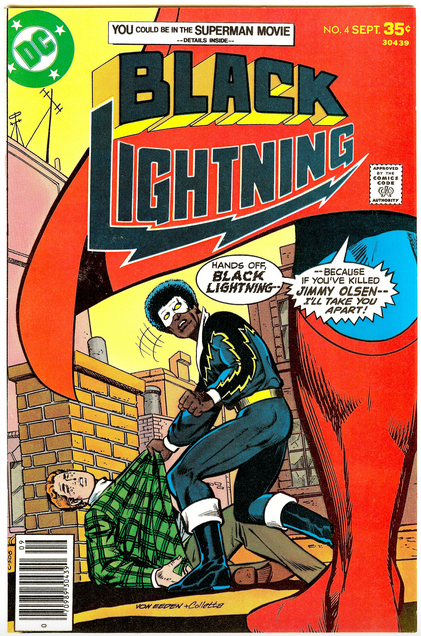 “Dogs and cats, living together!” – that’s what immediately popped into my mind yesterday when I read Tony Isabella praising DC on Facebook for how it was treating him in regard to Black Lightning.I’ve never seen the original contract between DC and Isabella in regard to Black Lightning so I have nothing to say of substance in regard to the property’s legal status, but as anyone who has followed Tony’s online writing over the years can tell you, Isabella’s statements about DC’s treatment of him and his landmark creation have not exactly been complimentary. That changed, however, yesterday, when Isabella called attention to an Amazon listing of the April 2016 release of Black Lightning, volume 1, the first of what could be a series of collections featuring DC’s first African-American superhero to star in an an eponymous book.
“Dogs and cats, living together!” – that’s what immediately popped into my mind yesterday when I read Tony Isabella praising DC on Facebook for how it was treating him in regard to Black Lightning.I’ve never seen the original contract between DC and Isabella in regard to Black Lightning so I have nothing to say of substance in regard to the property’s legal status, but as anyone who has followed Tony’s online writing over the years can tell you, Isabella’s statements about DC’s treatment of him and his landmark creation have not exactly been complimentary. That changed, however, yesterday, when Isabella called attention to an Amazon listing of the April 2016 release of Black Lightning, volume 1, the first of what could be a series of collections featuring DC’s first African-American superhero to star in an an eponymous book.
According to Isabella, the rapprochement is the result of outreach by Dan Didio and Geoff Johns, and Isabella is confident that DC will treat him fairly in regard to the payment of royalties. He also raised the possibility of doing more work for DC given sufficient reader demand; the prospect of Isabella working with, say, the creators of the revived Milestone line on a multi-generational crossover is particularly intriguing, given certain thematic resonances with Milestone’s nuanced reflections on creative identity.
To say that Isabella’s announcement is the most unexpected Facebook post of the year is an understatement — it’s one of the most dramatic turnarounds I’ve seen in decades of reading about comics-related disputes, and kudos to all involved for bringing about what I hope will be a truly lasting peace in our time.
Blog: PW -The Beat (Login to Add to MyJacketFlap)
JacketFlap tags: Top News, SDCC '15, Culture, Commentary, Fashion, Fandom, Cosplay, Add a tag
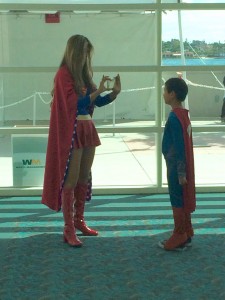 If you’re into cosplay, Saturday night is made for fighting the lines to get into the annual masquerade contest. Here are a few backstage pics from the show, along with a few other shots.
If you’re into cosplay, Saturday night is made for fighting the lines to get into the annual masquerade contest. Here are a few backstage pics from the show, along with a few other shots.
If you attended any of the panels I moderated, you know that my themes this year were community and personal connection. The above candid of what appear to be a mother and son is probably my favorite scene of the show.
As you know, guys have a proclivity toward taking pictures of cosplaying women in revealing garb, with little regard for who these women are as people. A pic I didn’t get: a young woman in an artful Poison Ivy costume who explained her costume to the photographer with a rather revealing statement: “I’d rather wear this every day than be slinging coffee.”
Captain America stopped by lunch on Saturday afternoon, and judging by the detail on the costume he wasn’t a cosplayer but the real Captain America.
The good folks at Comic-Con let me join the lucky few Jimmy Olsens and Peter Parkers who get to go backstage the shoot posed photos after each entry performs their routine. Before the show, however, cosplayers who aren’t part of the contest can have their photos taken as well. Harley Quinn dazzled the photographers with an array of poses …
… and afterward she handed out business cards – turns out she’s a talented seamstress, designer and costume fabricator. This is the case more often than one might guess — cosplay is often a marketing tool as much as a form of self-expression, an aspect of the culture that your typical “babes of cosplay” photo essay tends to miss.
The daughter of Batman and Poison Ivy enchants the photographers. Kids open the annual cosplay masquerade contest.
Princess Anna of Arendelle. This is where being in the photographer area was rather illustrative vis a vis the real culture of cosplay. The cosplayers weren’t told to strike a sexy pose — the repeated requests were for them to show the fabric details, construction, and in many cases, lighting and other tech that didn’t show up all that well on my iPhone under bright lights.
Fabric on display – cosplayers are asked to pose front, back, side to side, in angles highlighting key details, and finally, in whatever pose happens to be their favorite.
This looked great, but when the head came off it looked like the costume had almost killed the wearer. These things are hot and heavy.
The Transformers Bumblebee cosplay was a technological marvel to behold – and so tall that it couldn’t fit in the photographer staging area. As a result, we could photograph only the folks who made it work.
Minecraft 3D.
This costume was clever and funny – the Barbie doll was a fantastic touch. After the photographers called out for poses highlighting particular aspects of the design, one called out, “Show us your teeth!” — to which the cosplayer deadpanned: “I don’t have interesting teeth.”
There were a number of other costumes worth highlighting, but like most of the other folks I know here, I’m beat.
Blog: PW -The Beat (Login to Add to MyJacketFlap)
JacketFlap tags: Books, History, Conventions, Culture, Commentary, Fandom, Collectibles, comic-con, Jack Kirby, Top News, Crowdfunding, SDCC '15, comic book people, jackie estrada, Add a tag
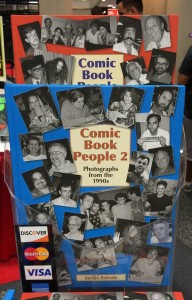 Want to know what comic-cons are really about? Get these books.
Want to know what comic-cons are really about? Get these books.
In my previous post I talked about the importance of community — it is central to proper understanding of ethics, and as such it is essential to a fan life well-lived. As an influx of new people explore the comics universe, the risk of losing sight of what connects us beyond passive viewing increases and the importance of learning from our history only grows.
That’s why Jackie Estrada’s Comic Book People is so vital – and if you’re at San Diego Comic-Con, you can get the hot-off-the-Kickstarter second volume at the Exhibit A Press booth, #1909 (aisle 1900, near the Lobby B2 entrance).
If you’re new to comic-cons there might be a temptation to think that books filled with photos of people from the ’70s and ’80s (vol. 1) and ’90s (vol. 2) are just for people who went to conventions back then, but as Don Draper would say, this isn’t nostalgia; it’s a time machine. The genius of these books is that you are in many ways their target audience — in addition to names and photos, Comic Book People explains who these people are and why they are important. Not only will this help you discover stories you might have otherwise missed, but they show you a world-shaping network as it grows. These folks built a global pop-culture empire that made billions and changed lives, inspiring an intensity of personal connection that rivals if not transcends that found in other art. Know them and you’ll understand the world you’ve just entered; follow their example and you’ll create a world that today exists only in dreams.
Blog: PW -The Beat (Login to Add to MyJacketFlap)
JacketFlap tags: Interviews, Comics, Culture, Podcasts and other media, Top News, Top Comics, podcast, Alternate Realities, Local Comic Shop, My Comic Shop History, Add a tag
In the end, memories are what make us who we are. Although they slip away so easily, these small fragments of past inform our future decisions and influence us every moment we’re alive. For most of us comic book readers, a formative moment in our personal histories is the first time we step into a comic shop. The pulpy smell of fresh floppies stacked in Diamond stamped boxes. The glistening translucent cases filled with TCG singles at exorbitant prices. The stern and booming voices of people arguing Batman chronology in the back by the trades.
The places individual comics fans make these universal memories shape their lives. For Director and Comics Historian Anthony Desiato and many other comics luminaries from upstate New York such as Rocket Girl writer Brandon Montclare, these formative experiences took place at Alternate Realities, which is going out of business after nearly a quarter of a century.
Desiato has made it his mission to chronicle the store’s final days through his podcast, My Comic Shop History. The last episode of this audio series comes out today, and in honor of his intriguing work and Alternate Realities’ storied history, we sat down with him to talk about the legacy of the store.
Alex Lu: So for those unfamiliar with Alternate Realities, can you give us a brief overview of your store’s history and what makes it special?
Anthony Desiato: Alternate Realities is (soon-to-be “was,” sadly) a comic book store in Scarsdale, NY, that is closing up shop for good after 23 years.
The store is the subject of my independent film, My Comic Shop DocumentARy, and my current podcast, My Comic Shop History.
The podcast is a 12-episode exploration of the store & its closing from the perspective of past and present owners, customers, and employees. We’ve been peeling back the curtain on the retail side of the comic book industry as we discuss the store’s inner-workings and comic shop culture generally.

What makes the store special—and the reason I’ve found it such a source of inspiration—is the community.
We count among our ranks a customer who worked at T.G.I. Friday’s but claimed to have killed 25 people in the line of duty as a secret agent; our resident curmudgeon, a former flea market vendor who condemns modern society with language that would make a sailor blush; and the store’s owner, Steve Oto, who traded his legal career for a life behind the counter and a very love-hate relationship with his clientele.
Lu: What’s your role in the store and how long have you been involved?
Desiato: Heroes World (a long-defunct store in White Plains) was my first comic shop, and when it abruptly closed on me during elementary school, Alternate Realities became my new go-to place. For the first few years of my patronage there, I was just the shy kid who would pick up my books every week while my mother waited in the car.
In high school, Steve offered me a summer job, and that was my entry into a whole new world. Throughout high school and college, both my level of responsibility at the store as well as my friendships with the guys who shopped & worked there would grow.
It wasn’t until the end of my employment there (during law school) that I began to take on my current role of—for lack of a better term—“store chronicler.” That new path gave birth to my film about the store, its spinoff (By Spoon! The Jay Meisel Story), and now the podcast.
Lu: What do you think drove the decision to close the store?
Desiato: If you believe Steve’s closing announcement, he’s closing in large part “because of those customers who have left me in the lurch” by not buying the items they ordered. However, if you truly analyze the situation, as we’ve been doing over the course of My Comic Shop History, it becomes clear that the stated reason for closing is perhaps a bit disingenuous.
If customers are reneging on their orders, there are steps a store can take to at least try to remedy the situation first. Closing the store is the nuclear option! It’s not really a proportionate response to address what’s ultimately a small group of delinquent customers.
What we all realize is that Steve’s complaints are really just symptomatic of a growing frustration and fatigue with running the business.
In Episode 7 (“Comic Shop Business School”), I spoke with the owner of The Spider’s Web, a relatively new comic shop in Yonkers. That owner is two years in and still has his passion for the business and the hobby.
After 23 years of the grind of running a small business, Steve simply doesn’t have that anymore. As he has said many, many times over the years—in person, on Facebook, in My Comic Shop DocumentARy, and in My Comic Shop History—he’s tired. And I don’t think anyone would dispute that he’s earned his rest.
Lu: How has the community responded to the store’s closing?
Desiato: That’s really what the podcast is all about and why I wanted to do it in the first place.
Aside from the friendship we share, what I hope listeners take away from this show is how much we all care about “The Store.”
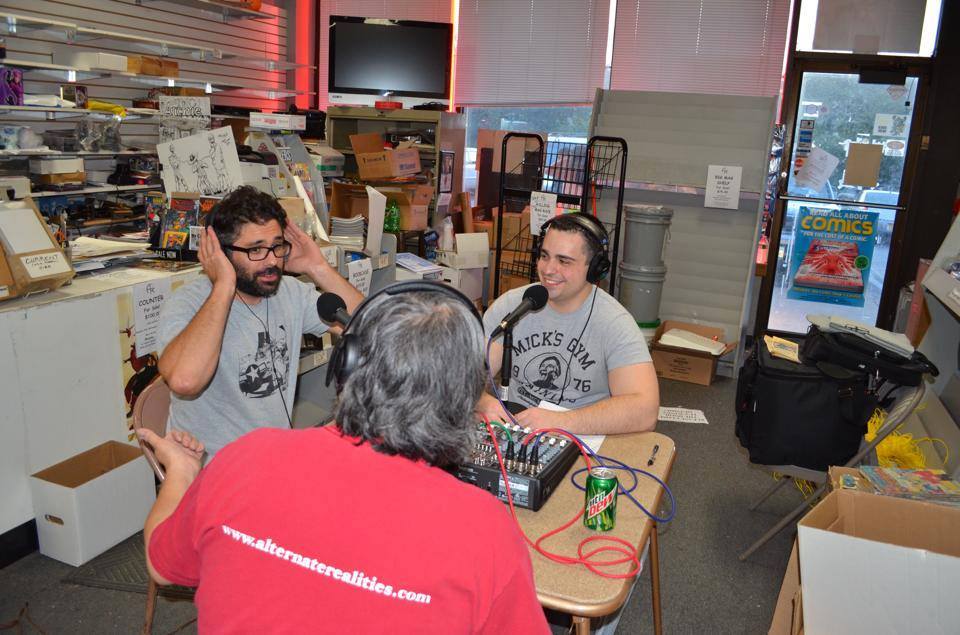
Everyone who has participated in the podcast has worked, owned, or volunteered at Alternate Realities at some point. We’ve all invested time and effort and wanted the store to be as strong as possible.
To see the store end in this way has been very bittersweet. Not to speak for the entire community, but for myself and many of the people I spoke to on the podcast, I feel there’s a sense of sadness that it came to this, acceptance that it’s the right move for Steve, and, most importantly, appreciation for everything the store has meant to us. It’s been our clubhouse, truly.
Lu: Given that Alternate Realities has such a long and storied history, those who have been there have had the unique perspective of having seen the comics reading audience grow exponentially and the industry dramatically change. How would you compare comics at the store’s opening to comics now, at the store’s close?
Desiato: Well, seeing as how I was 5 when the store opened, I’m not sure I can really give a full answer to that question! Interestingly, though, the store opened the same year that “The Death of Superman” (my first comic) came out. That was arguably the beginning of “event” storytelling as we know it today, and the store is closing amidst Convergence and Secret Wars, two huge events from the Big Two. So, in a way, maybe not that much has changed!
To answer your question more specifically: Based on the time that I’ve been affiliated with Alternate Realities, I would argue that we have not seen huge shifts the way you might expect. For example, the rise of comic book movies didn’t necessarily drive hordes of new customers to the store. At the same time, the advent of digital comics did not erode our customer base too much, either.
Lu: What do you think is the next big thing for the industry?
On the retail side, one of the things we talk about on the podcast (we do a “Comic Shop Business School” series-within-a-series across a number of episodes) is how comic shops need to be a “destination” in order to survive these days. Areas to hang out, events, signings–things like that.
Lu: What new projects are the Alternate Realities crew heading off to pursue?
To find out what the store’s owner, Steve Oto, is up to next, I encourage folks to listen to the finale of the podcast, out today! Up next for me is a new documentary and, hopefully, more podcasting in the future! As for our group, we plan to continue the friendships we forged at Alternate Realities. The store may be gone, but the community lives on.
RENT My Comic Shop DocumentARy and By Spoon! The Jay Meisel Story on Vimeo!
SUBSCRIBE to My Comic Shop History on iTunes!
LIKE My Comic Shop History on Facebook!
Blog: The Mumpsimus (Login to Add to MyJacketFlap)
JacketFlap tags: Africa, politics, culture, South Africa, terrorism, guns, violence, white supremacy, Rhodesia, Add a tag
The symbolism isn't subtle. Like the confederate flag that flies over the South Carolina capitol, these are flags of explicitly white supremacist governments.
Rhodesia plays a particular role within right-wing American militia culture, linking anti-communism and white supremacy. The downfall of white Rhodesia has its own sort of lost cause mythic power not just for avowed white supremacists, but for the paramilitarist wing of gun culture generally.
The power of Rhodesia for paramilitarists is evident throughout the history of Soldier of Fortune magazine, a magazine that in the 1980s especially achieved real prominence. The first issue of SoF was published in the summer of 1975, and its cover story, titled "American Mercenaries in Africa", was publisher Robert K. Brown's tale of his visit to Rhodesia in the spring of 1974. (You can see the whole issue here on Scribd. Warning: There's a gruesome and disturbing picture of a corpse with a head wound accompanying the article.) For Brown's perspective on his time in Rhodesia, see this post at Ammoland.
SoF continued to publish articles on Rhodesia throughout the 1970s and into the early 1980s. They also published articles about South Africa. Here's a two-page spread from the August 1985 anniversary issue (click to enlarge):
The introduction to the first article states:
SOF made quite a reputation in the early years of publication for fearless, firsthand reporting from the bloody battlefields of Rhodesia. Our efforts in that ill-fated African nation and our support of the Rhodesian government in operations against communist insurgents gained us two unfortunate, undeserved labels: racists and mercenaries. We are neither. On the other hand, we have never avoided consorting with genuine mercs to insure readers get the look and feel of Third World battlefields.It's true that anti-communism was the primary ideology of SoF in the 1970s and 1980s and that they would take the side of anyone they considered anti-communist regardless of their race or nationality — they published countless articles supporting the mujahideen in Afghanistan, the Karen rebels in Burma (heroes of Rambo 4), and the contras in Nicaragua. (Ronald Reagan, he of the Iran-Contra scandal, supported white Rhodesia even longer than Henry Kissinger, causing them to have their first public disagreement. See Rick Perlstein's The Invisible Bridge pp. 671-673.) But the kind of anti-communism that supported Ian Smith's Rhodesia and apartheid South Africa was an anti-communism that supported white supremacist government.
The second page there begins an article written by a veteran of the South African anti-insurgency campaigns, and it sings the praises of the brutal Koevoet (crowbar) unit in Namibia. Here's a passage from the next page: "It doesn't pay to play insurgency games with Koevoet. SWAPO had felt the force of the crowbar designed to pry them out of Ovamboland."
It's no great mystery why such campaigns would appeal to white supremacist groups, and why white supremacists would use the examples of Rhodesia and South Africa to stoke the fears and passions of their followers.
Consider the Greensboro massacre of November 1979. Tensions between the Communist Workers Party and the Ku Klux Klan led to the Klan and the American Nazi Party killing 5 activists. The neo-Nazi and Klan members accused of the crimes were acquitted. The head of the North Carolina chapter of the National Socialist (Nazi) Party of America in 1979 was Harold Covington, who was implicated in the massacre but never faced criminal charges. Covington loved to brag that he'd been a mercenary in Rhodesia, though his brother claimed that wasn't quite accurate:
I suppose he wanted to move someplace where everything was white and bright, so after a yearlong stint at the Nazi Party headquarters, he wound up going to Rhodesia, and he joined the Rhodesian Army. In different blogs and writings, he was always bragging, "Oh, I was a mercenary in Rhodesia and I went out and did all this fighting." But to the best of my knowledge, according to the letters he wrote to my parents, he was a file clerk. He certainly never fired a shot in anger. He started agitating over there, and the [white-led] Ian Smith government said, "We have problems enough without this nutcase," and they bounced him.The myth of the lost white land of Rhodesia has proved resilient for the paramilitary right. It plays into macho adventure fantasies as well as terror fantasies of black hordes wiping out virtuous white minorities. Rhodesia sits comfortably among the other icons of militia culture, as James William Gibson showed in his 1994 book Warrior Dreams, in which he described a visit to a Soldier of Fortune convention:
All the T-shirts had their poster equivalent, but much else was available, too. John Wayne showed up in poses ranging from his Western classics to The Sands of Iwo Jima (1949) and The Green Berets (1968). Robocop and Clint Eastwood's Dirty Harry decorated many a vendor's stall. An old Rhodesian Army recruiting poster with the invitation "Be a Man Among Men" hung alongside a "combat art" poster showing a helicopter door gunner whose wolf eyes stared out from under his helmet; heavy body armor and twin machine gun mounts hid his mortal flesh. (157-158)Anti-communism doesn't have much resonance these days, and so the support of Rhodesia or apartheid South Africa can no longer be couched in any terms other than ones of white supremacy — terms that were previously always at least in the shadows. Militarism, machismo, and white supremacy have no objection to hanging out together, and the result of their association is often deadly.
See also: "The connection between terrorist Dylann Roof and white-supremacist regimes in Africa runs through the heart of US conservatism" from Africa as a Country.
Blog: PW -The Beat (Login to Add to MyJacketFlap)
JacketFlap tags: bad cgi, Movies, hollywood, Culture, cgi, high heels, Top News, Chris Pratt, jurassic world, Mad Max: Fury Road, Add a tag
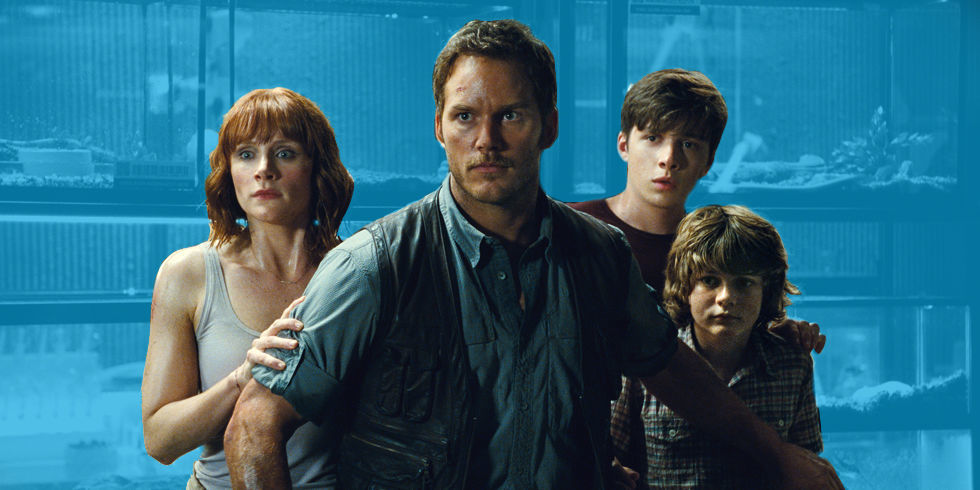 Jurassic World’s ascent to the biggest box office opening of all time has everyone flustered. It’s take of $208.8 million in its first weekend beat even The Avengers which made a mere $207.4 million. (It’s still ahead adjusted for inflation but Gone With the Wind is still the biggest by that metric.) The opening shattered analysts’ projections, leading to a particularly befuddled take by Deadline:
Jurassic World’s ascent to the biggest box office opening of all time has everyone flustered. It’s take of $208.8 million in its first weekend beat even The Avengers which made a mere $207.4 million. (It’s still ahead adjusted for inflation but Gone With the Wind is still the biggest by that metric.) The opening shattered analysts’ projections, leading to a particularly befuddled take by Deadline:
Tracking typically wears the dunce caps in these off-kilter prediction scenarios. However, distrib chiefs sincerely swear NRG, Screen Engine and Marketcast’s systems aren’t broken, and as one forecasting insider asserts: “We’re not paid to predict box office, rather identify pockets of strength, threats and opportunities in the marketplace for the studio. … It’s a five-week journey with daily phone calls.”
Okay so you had a….threat pocket? This wonk talk is Onion worthy.
So as various execs and and analysts around Hollywood drew their own estimates, what truly happened with Jurassic World is that it became a beast unto itself. That’s when the film started over-indexing and beating everyone’s expectations. And the catalyst for the WOM heatwave can be pinned squarely to social media — which, unlike tracking, captured auds’ need-to-see vibe. Adds another Universal insider: “When you go into the weekend, you are armed with your expectations based on historical data, relying on movies released during the same time period as well as assessing different variables in the marketplace. But when the film gets a chance to be itself and grows through the weekend, you lose your historical data.”
While some are still reeling from the over-indexing, Variety had a more sensible deduction: CHRIS PRATT.
“He’s the modern action hero,” said Paul Dergarabedian, senior media analyst at Rentrak. “He’s funny, he’s charming, he’s self-deprecating. I call him Jimmy Stewart in a leather vest. He just has the perfect sensibility for today’s audiences.”
Also…dinosaurs. People like dinosaurs. Bold, I know.
Jurassic World toppling the Avengers is the first blow for a world where superheroes aren’t everything, and makes the generally blah reaction to Avengers 2 look a little more serious. But Jurassic World is still a pretty bland film, as the above still suggests. I know it’s hard to act scared of a screen piece of wall, but look at the kids in that photo. I couldn’t tell if Nick Robinson as the teen heartthrob was supposed to be generally insensate to any outside stimulus, or just no one could take the time to prod him with a stick.
I pretty much agreed with everything that Beat critic Hannah Lodge said about this film. It’s got an awful script, lethargic acting, some nice dinos, and a troubling obsession with running in high heels. Like Lodge, all I could think of during the second half of the movie was whether Bryce Dallas Howard’s Claire was STILL running around in high heels. It turns out Howard made a point of learning how to do it and insisted on wearing them while she was running away from dinosaurs. I knows it’s a fantasy.,.but you can’t run away from dinosaurs in high heels. And there was no internal logic. At one point Pratt’s Owen even mocks her shoes, which YOU’D THINK would set up a scene where she ditches them. I kept expecting her to find some running shoes in the old compound from Jurassic Park but no such luck. She just kept running and running. A line without a payoff…that pretty much sums up the entire Jurassic World script. The one clever thing it did was to combine the predictable roles of Feisty Girl Lead and Annoying Corporate Wonk into one role! Innovative!
Even with that, as a movie, Jurassic World, was on its own fairly low terms, a better film than Avengers 2. I hadn’t memorized the trailer for JW, so when I saw the movie at a screening, I went in thinking “This is going to be a dumb CGI fest but I’m just going to let go, let God, and give in.” I appreciated how the movie had ONE big menace, and all the action was built around a confrontation with that menace, instead of branching off to go to Wakanda to pick up some vibranium and set up three spin-offs—and perhaps audiences did as well. OTOH, if you did memorize the trailer then you pretty much saw everything cool in the movie. But that didn’t stop anyone from going to the theater. It also hit the sweet spot of millennial 90s nostalgia. All we need in the sequel when Dr. Wu pulls out his bag of Indominus Furiosa babys and sets them loose is a cameo for Dr. Ian Malcolm.
As usual the bombastic success of a film with a lackluster storyline has led to lamenting how Hollywood’s hands are tied when it comes to making anything good as Matt Patches writes for Esquire:
This is not just an issue with Trevorrow or his blockbuster. Hollywood’s cynicism is hitting peak levels and continues to trickle into our multiplexes. Movie studio executives would love to greenlight to discover the next Spielberg or nurture a moderately-sized thrill ride into a big-budget classic. But they also want to make money. There are movies that challenge the balancing act with whirlwind intensity; Christopher Nolan’s Inception takes the frustration of imagining and executing action movies and turns it into an action movie. That subtlety is hard to come by. With change and reversion seemingly out of the question, creative types feel compelled to boo and hiss in their movies. Trevorrow employs Jake Johnson to spit his fire. Last month’s Tomorrowland lectured audiences in the dangers of apocalyptic disaster movies. And on the Oscar campaign trail for last year’s Hollywood satire, Birdman, Alejandro G. Iñárritu just came out and say what the film danced around: superhero movies are “cultural genocide.” A few months later, when Birdman won the Academy Award for Best Picture, voters could pat themselves on the back for recognizing great filmmaking. They could make Birdman—isn’t that real cinema? And then the next morning, most of the voters returned to their movie studio jobs and pushed sequels, reboots, and $150 million toy adaptions through the pipeline.
I can’t refrain from adding to the laments however, as I peruse the box office total of Mad Max Fury Road after five weeks: a relatively moderate $138.6 million. It’s made more worldwide, but set against that $200 million budget it’s still not a big moneymaker. HOW! How can this galvanizing, senses-shattering, mind-expanding masterpiece of heart and magic have made only this much when twaddle like Jurassic World is setting records? Why, oh lord, why?
Yes yes, I know, MMFR was R-rated. Meanwhile parents were secretly eager to go see JW with their kids.
Will the religious fervor for the church of George Miller pave the way for an actual sequel? Hard to tell, but I doubt we’ll see Miller allowed to spend money on that level again, alas.
In my previous inquiry into the actual reason that people found the practical effects of Mad Max Fury Road so profoundly affecting compared to CGI spectacle, I didn’t find much from a psychological viewpoint, but several people pointed me towards this Cracked piece from a few months ago, 6 Reasons Modern Movie CGI Looks Surprisingly Crappy by David Christopher Bell. This piece sums up some technical reasons for the affectlessness of CGI, using shots from the Jurassic World trailer as examples. Digital grading, unrealistic camera angles, bad physics, and things our minds just reject. For instance this shot of a helicopter falling into a dinosaur:
Sure, that looks pretty awesome, but destruction on that scale should blow our fucking minds. The response to dinosaurs wrecking a helicopter should be nothing short of paralysis, but this scene has no sense of gravity or consequence. There’s no scale to it. There’s even going to be a scene where (minor spoilers) a Pteranodon picks up a woman and literally drops her into the mouth of the Mosasaurus. It doesn’t matter how real the CGI looks, because that scene belongs in a fucking Sharknado movie. It’s an absurd cartoon orgy.
There’s some more technical discussion at a site that offers AfterEffects plug ins of all places, 10 Reason Why CGI is Getting Worse Not Better, which lays out most of the same arguments as the Cracked piece, with some more scolding over the orange-and-blue digital grading that every movie is saturated with these days, and also “ratcheting up the sequel-itis:”
The CGI in every sequel has a major goal: it has to be more impressive, complex, and crazier than its predecessor. The stakes have to be higher. Filmmakers try to create engagement with more explosions rather than letting story, plot, and character development produce interest.
Another huge issue is that in a world of endless sequels, we no longer have to worry about our main character’s well-being. We don’t need to be invested in the characters because there’s no chance they’ll die. They aren’t in any real peril. The actors have already signed up for two sequels! James Cameron is working on three Avatar sequels simultaneously! What’s happening now is that filmmakers are making scenes more and more extravagant to offset this sequel fatigue. They keep pushing the limits to keep us saying ‘well surely they can’t survive this’ until it gets utterly ridiculous.
So true. I actually felt that JW was a little moderate in its uses of CGI, but how many big bad dino-hybrids do you think will be in the sequel?
For one little moment, it seemed the rapturous response to Mad Max Fury Road might have Hollywood thinking that more is not better. The unexpected success of Jurassic World has laid that idea to rest, just like you knew it would. It would be nice to think that MMFR might influence some filmmakers to take more chances in that direction, and I don’t doubt that we’ll see endless allusions to it as we did after The Matrix and 300 came out. But given the way Hollywood plucks indie directors out of the schoolyard and gives them huge blockbusters to direct while the SFX unit handles all the action—JW’s Colin Trevorrow had directed one movie previously, and nothing in the film shows the slightest hint of style—it’s not very likely the next generation of action filmmakers will be making waves or demands. These days moviemaking is just too expensive and leviathan to take chances.
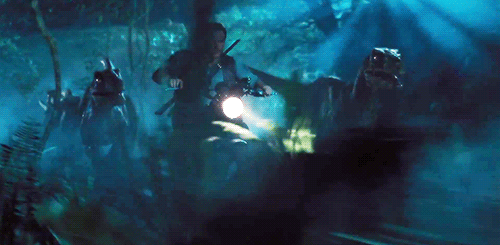
And you know, Chris Pratt on a motorcycle and his henchdinos. That’s one things CGi is good for.
Blog: Kid Lit Reviews (Login to Add to MyJacketFlap)
JacketFlap tags: and animals, liss instructive information, National Geographic Kids Almanac 2016, National Geographic Kids Magazine, Children's Books, fun, history, games, Middle Grade, nature, science, Favorites, culture, Series, geography, maps, Books for Boys, going green, National Geographic Society, 5stars, Library Donated Books, Add a tag

National Geographic Kids Almanac 2016
National Geographic Society & National Geographic Kids Magazine
National Geographic Society 5/12/2015
978-1-4263-1921-1
352 pages Age 8—12
.
“This New York Times bestseller is packed with incredible photos, tons of fun facts, crafts, activities, and fascinating articles about animals, science, nature, technology, and more. New features include a special section on animal friends; an updated “Fun and Games” chapter filled with all-new games, jokes, and comics; a new “Dino Myths Busted” feature; all new weird-but-true facts, crafts, and activities; a new special “15 Facts” feature in every chapter; updated reference material, and much more! And, this is the only kids’ almanac with mobile media features that allow kids to access National Geographic videos, photo galleries, and games.” [publisher]
Review
National Geographic Kids Almanac 2016—Wow, where do I start? Color blasts out from every page. The photography is as spectacular as National Geographic photography has always been—brilliant, intimately detailed, knock-you-off-your-feet fantabulous. Divided into ten sections, the Kids Almanac 2016 begins with a section on interesting things happening in 2016, and then it explores the usual topics of history, culture, science, geography, nature, and animals. The almanac also includes a section on green technology and its effect on Earth, and a section about exploration and survival. Most likely, a favorite for kids will be the section on games. Actually, the Kids Almanac 2016 contains a game throughout the entire 350 pages. In each chapter is a clue. Find all ten clues and you can open up digital extras.
 In reading the Kids Almanac 2016, I think National Geographic has covered all the subjects kids will find interesting and all those they need to know about. Adults can get a lot out of this almanac as well. There is a tremendous amount of information in this relatively small book. I loved the animal topics, of which there are many. Kids interested in dinosaurs will find a prehistoric timeline, nine “Bet you didn’t know” facts, and myths. Each section ends with a quiz on that section’s subject. When you cannot get to a place, or want to know what is happening in different places around the world, the Kids Almanac 2016 is a tremendous aid. Kids can also dig a little deeper in subjects they love and learn about subjects they never thought about or thought were dull. There is not one tedious word or picture in the Kids Almanac 2016. Here are a few subjects I found to be amazing:
In reading the Kids Almanac 2016, I think National Geographic has covered all the subjects kids will find interesting and all those they need to know about. Adults can get a lot out of this almanac as well. There is a tremendous amount of information in this relatively small book. I loved the animal topics, of which there are many. Kids interested in dinosaurs will find a prehistoric timeline, nine “Bet you didn’t know” facts, and myths. Each section ends with a quiz on that section’s subject. When you cannot get to a place, or want to know what is happening in different places around the world, the Kids Almanac 2016 is a tremendous aid. Kids can also dig a little deeper in subjects they love and learn about subjects they never thought about or thought were dull. There is not one tedious word or picture in the Kids Almanac 2016. Here are a few subjects I found to be amazing:
“Secrets of the Blue Holes”
Animal photography and how to get the shot.
“The Wonders of Nature: the Oceans”
“16 Cool Facts about Coral Reefs”
The jokes and comics in Fun and Games
Orangutan to the Rescue (Survival Story)”
What would a National Geographic book be without its gorgeous maps? The Kids Almanac 2016 has plenty of maps and flags. I think the National Geographic Kids Almanac 2016 is a must read, if not a must have, for kids, especially middle graders who will learn a lot without realizing they are learning. The Kids Almanac 2016 is fun, exciting, and interesting. The pages are colorful, the photographs and images extremely detailed, and the subject matter is diverse.
 Though kids are just now beginning to enjoy their summer school breaks, the Kids Almanac 2016 will keep them reading through the summer, which will help kids during their next school year, make them more informed about their world. Parents concerned about the books their kids read will have not one worry about this almanac. Every word, every subject, and every article is kid-friendly. The National Geographic Kids Almanac 2016 is an interesting read that will keep kids hooked long past summer vacation.
Though kids are just now beginning to enjoy their summer school breaks, the Kids Almanac 2016 will keep them reading through the summer, which will help kids during their next school year, make them more informed about their world. Parents concerned about the books their kids read will have not one worry about this almanac. Every word, every subject, and every article is kid-friendly. The National Geographic Kids Almanac 2016 is an interesting read that will keep kids hooked long past summer vacation.
NATIONAL GEOGRAPHIC KIDS ALMANAC 2016. Text and images copyright © 2015 by National Geographic Society. Reproduced by permission of the publisher, National Geographic Society in partnership with National Geographic Kids Magazine, Washington DC.
Purchase National Geographic Kids Almanac 2016 at Amazon—Book Depository—National Geographic.
Kids! Join the National Geographic Kids Book Club HERE!
Teachers and Librarians can find additional information at: http://www.ngchildrensbooks.org
National Geographic Educational site is HERE.
Learn more about National Geographic Kids Almanac 2016 HERE.
Check out the National Geographic Society website: http://www.nationalgeographic.com
Find other National Geographic books at: http://www.nationalgeographic.com/books
Learn more about the National Geographic Kids Magazine at the website: http://www.kids.nationalgeographic.com
Kids Almanac 2015
.
Copyright © 2015 by Sue Morris/Kid Lit Reviews. All Rights Reserved
Review section word count = 496
Filed under: 5stars, Books for Boys, Children's Books, Favorites, Library Donated Books, Middle Grade, Series Tagged: and animals, culture, fun, games, geography, going green, history, liss instructive information, maps, National Geographic Kids Almanac 2016, National Geographic Kids Magazine, National Geographic Society, nature, science
Blog: Stacy A. Nyikos (Login to Add to MyJacketFlap)
JacketFlap tags: One Hundred Years of Solitude, Gabriel Garcia Marquez, Italy, Naples, Elena Ferrante, My Brilliant Friend, working poor, culture, Add a tag
My Brilliant Friend
Elena Ferrante
Adult
After a string of Australian books both adult and children's, I was beginning to feel like a serial Aussie reader and decided to get out from down under if only to vary my reading.
So, I went to Italy. I've been craving gelato and chianti ever since.
There is a significant difference between old-world writing and stories from the "colonies", penal and otherwise. The old-world has, not always, but very often, a very melancholy feel to it, whereas "newbies" from the colonies seem to have been able to free themselves somewhat from that melacholy. Their more upbeat feel may be what's so alluring to me. Or the accent. These have all been audio books.
Nevertheless, a little melancholia isn't a bad thing. What's more, My Brilliant Friend is jam-packed with writing tricks. But first, a synopsis:
My Brilliant Friend is the story of two young Neapolitan girls growing up in the harsh conditions of a very working class, poor neighborhood, their dreams, the diversions those dreams have to take due to economic hardship - one girl gets to go on to school, while her smarter friend is forced to quit school and try to marry up - and the successful, but flawed, women the girls become.
What is the absolute, most brilliant aspect of My Brilliant Friend, is its final line and how it ties the entire book together and then rips it apart, much like the last line of Gabriel Garcia Marquez's last sentence to One Hundred Years of Solitude deconstructs and erases the entire story that has gone before with one slash of the pen. Ferrante is brilliant in her alteration of this trick, to tie and deconstruct her story at the same time - all was for nothing - or so it seems since this is the first in a series of books called the Neapolitan Novels. However, I didn't know that as I listened to the last line and actually stopped my car from the force of that line. It made me think, reponder, rethink, re-reflect. It's that brilliant.
It's usually first lines that are so mesmerizing, pulling the reader in, hooking her, and making her want more. But if the last line snags in a reader's heart, it really never lets go. It haunts the reader, challenging her to think and think and think. It's an amazing writer tool I can't wait to use.
For more great reads, cinco de mayo your way over to Barrie Summy's website! Add a Comment
Blog: PW -The Beat (Login to Add to MyJacketFlap)
JacketFlap tags: annie goetzinger, secret origins, this is not the legal beat, Books, Graphic Novels, History, Culture, Fashion, Batman, paris, NBM, dior, Catwoman, Art Comix, Top News, Add a tag
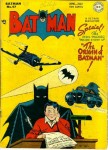 Girl in Dior has been getting great press worldwide for its depiction of one of the most influential premiere collections in fashion history, but there are a couple of classic superhero connections as well.
Girl in Dior has been getting great press worldwide for its depiction of one of the most influential premiere collections in fashion history, but there are a couple of classic superhero connections as well.
Sixty-eight year old fashion spoiler alert!
As Girl in Dior aptly depicts, the designer’s debut collection split the fashion world. For some, the longer length of the skirts in Christian Dior’s first collection in 1947 was a step backward, but what ultimately won the day was a sense that Dior had tapped into deeper, more vital currents in the post-war West. Besides changing the course of fashion for a generation and, along the way, mentoring his successor in innovation, Yves Saint Laurent, Dior inspired a description that immediately became synonymous with his designs and, over time, any revolutionary break from existing style: the New Look.
Girl in Dior beautifully depicts the entry of this phrase into the fashion lexicon. After noting the presence of legendary Harper’s Bazaar editor Carmel Snow in the front row, author Annie Goetzinger lavishly recreates the moment when, following the show, Snow uttered the phrase that solidified Dior’s place in fashion history.
If you’re reading this site, though, chances are that you’re already thinking that the New Look sounds mighty familiar.
It was, of course, the name famously — and not coincidentally — given to the modernization of Batman's appearance in 1964.
But that wasn’t the first time Dior’s New Look appeared in Batman comics – there’s also a reference contemporaneous with Dior’s early work.
Dior’s New Look garnered a lot of press in the U.S., from the revolutionary collections in the late ’40s to the Dior-mania of the subsequent decade and more. For our purposes, two articles in particular stand out: a January 1948 New York Times piece headlined “New Look to Stay, Expert Asserts” and Life Magazine‘s coverage of Dior’s latest “New Look” collection in February 1948.
To see how such stories influenced comics, we can turn to the June 1948 of Batman, which re-tells Batman’s origin and includes his epic encounter with his father’s murderer, Joe Chill. However, that’s not the only story in this book, which deserves a digital restoration in full on Comixology (hint, hint).
The landmark Batman #47 actually opens with a Catwoman story called “Fashions in Crime.” The tale begins with Catwoman breaking out of jail, only to hear herself mocked by other women as she walks down the street while wearing her civilian clothes:
“Hmmph! She’s wearing a short skirt! She doesn’t have the NEW LOOK!”
As the women go on to ridicule her for not reading the latest fashion magazines, Catwoman makes the painful realization that “since [she’s] been in prison, the style has changed.” But this also gives her an entrepreneurial idea: she creates her own fashion magazine, Damsel, along with a Damsel fashion TV program.
Months later Damsel is the hottest media empire in the fashion world, and the scene shifts to an older socialite, who, wearing an elaborate hat, notes that Catwoman-turned-Damsel-publisher-Madame-Moderne’s latest designer favorite is “a gown by Millie Karnalee.” Karnalee’s name seems odd, but at the time it would have made sense as a pun on the popular American designer Hattie Carnegie, the subject of the January 1948 New York Times piece. Carnegie, besides, ahem, adapting (i.e. copying) Dior’s “New Look” at a lower price for the U.S. market, also made a point of condemning the predilection of younger women not to wear hats.
And despite a nifty later scene wear Batman cracks the case thanks to his encyclopedic knowledge of fashion illustration technique, that’s where the story begins to diverge from the world of Girl in Dior.
Apparently the writers weren’t aware of the free samples and ample cashflow that would have been accrued to the publisher of the world’s hottest fashion magazine, because Catwoman proceeds to use her newfound high-society access to steal clothes and rob women at an exclusive fashion show. Not surprisingly, the scene at Catwoman’s show is rather different from the more modest Parisian runways of the time — in true 1940s Batman fashion, it features “giant needles … scissors … thimbles … and a huge sewing machine!”
Girl in Dior might not end with a fight on oversized designer props, but it is nonetheless a most enlightening read. I could go on, but I’ll leave that to an actual reviewer – ceci n’est pas une critique de Jeune fille en Dior.
Blog: The Children's Book Review (Login to Add to MyJacketFlap)
JacketFlap tags: Giveaways, Culture, Book Giveaway, featured, European Culture, Carole P. Roman, If You Were Me and Lived In, Introduction to Cultures, Add a tag
The Children’s Book Review | April 17, 2015 Enter to win a complete autographed set of the If You Were Me series, by award-winning author Carole P. Roman; including If You Were Me and Lived in … Scotland: A Child’s Introduction to Cultures Around the World! One (1) winner receives the grand prize: An autographed set of Carole P. Roman’s If […]
Add a CommentBlog: PW -The Beat (Login to Add to MyJacketFlap)
JacketFlap tags: News, History, Old Comics, Culture, Superman, original art, Comic Strips, IDW, Joe Shuster, Jerry Siegel, Jack Kirby, MoCCA, Society of Illustrators, Stan Lee, Craig Yoe, Milt Gross, Top News, Yoe Books, dick ayers, fay king, fin fang foom, Add a tag
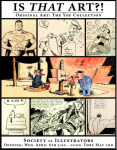 This exhibit of works from Craig Yoe’s original art collection has already garnered stellar accolades – tonight you can see why. And that’s not all …
This exhibit of works from Craig Yoe’s original art collection has already garnered stellar accolades – tonight you can see why. And that’s not all …
I had the good fortune of seeing an early preview of Is That Art? at the Society of Illustrators a few weeks ago, and it’s a must-see for anyone who wants to connect with the magic and the power of creative design. The exhibit covers much of the first century of comics & cartoon art, and the work is displayed in ways that highlight deep connections and spark new ideas. A original Spark Plug parallel to a Peanuts strip where Snoopy is dismissed as a dog; a landmark portrait of Superman for Siegel-and-Shuster’s syndicate chief near a reflection on a woman’s dual identity by Fay King; the first Pogo newspaper strip; the original Fin-Fang-Foom-awakes page, signed by Stan Lee, Jack Kirby, and Dick Ayers ….

I could go on, but I’ll leave you to discover all the wonders for yourself. The exhibit’s official opening is tonight from 5pm – 10pm at the Society of Illustrators, 128 E. 63rd St. in New York City. If you can’t make it this evening (or at all, alas), you can find some consolation in the extensive Yoe! Books library, which includes lavish and faithful restorations of material ranging from kitsch to classics. One place to start: the latest Yoe! Books/IDW publication, Milt Gross’ New York, which has been receiving impressive reviews.

If you can make it to the Society of Illustrators, don’t miss its other must-see exhibits. The original art from Little Nemo: Dream Another Dream is up through tomorrow (April 9), and seeing it at full size reminded me of seeing the original art for Robert Crumb’s Book of Genesis at the Hammer Museum – a revelation. As for the exhibit on Alt-Weekly Comics curated by Warren Bernard and Bill Kartalopoulos, well, that too deserves a book of its own – this exhibit is important not just for chronicling an influential, if under-appreciated genre within North American comics, but for helping us understand the world today.
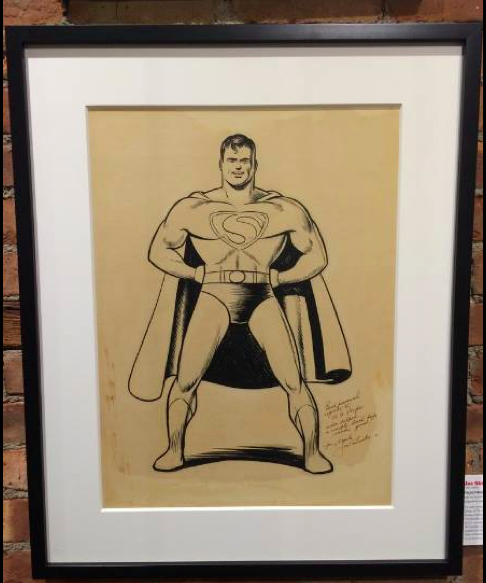
Blog: PW -The Beat (Login to Add to MyJacketFlap)
JacketFlap tags: con man, kings of con, natha fillion, Richard Speight, rob benedict, supermatural, Conventions, Culture, Firefly, Nerdlebrity News, Jr, Top News, Alan Tudyk, Crowdfunding, Add a tag
Seems like everyone had the same great idea at the same time: with comic-cons proliferating, and nerdlebrities making a circuit out of it, wouldn’t this be fine fodder for a realityish TV show/webisode of some kind? And wouldn’t actors who had starred in TV shows that had insanely fanatic fanbases but who didn’t get much airtime outside of that be the perfect people to do it?
It seems both Firefly’s Alan Tudyk and Nathan Fillion and Supernatural’s Rob Benedict and Richard Speight, Jr had the same idea. And both have turned to Indiegogo to bring these ideas to fruition.
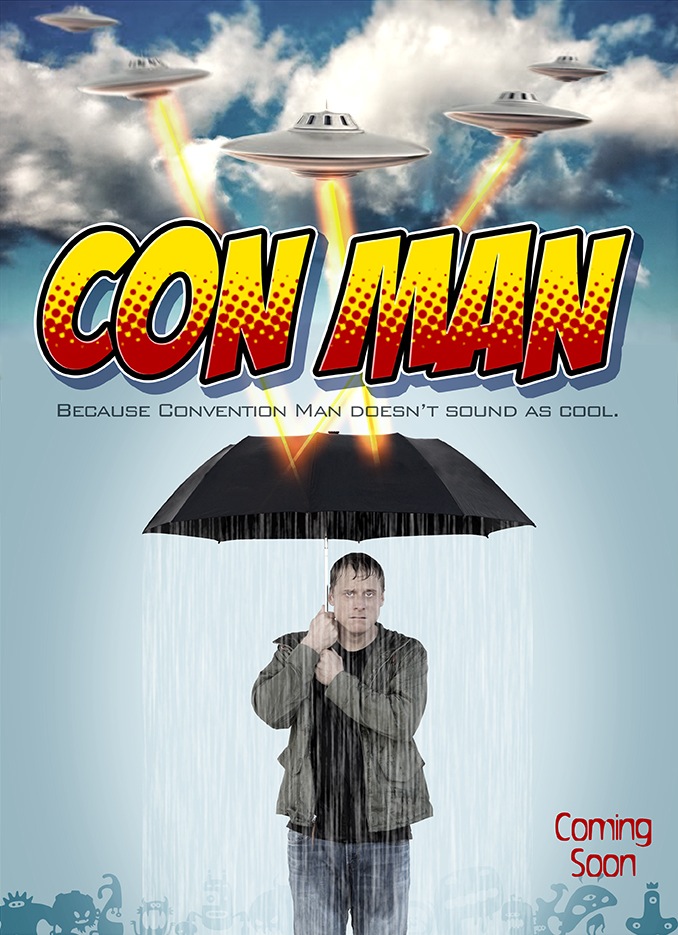
The Tudyk/Fillion effort launched first. It’s called Con Man and it’s already a go, with $2,386,241 raised, a bit more than the $425,000 they were going for. This is a scripted adventure about nerdlebrities who go to cons starring…nerdlebrities who go to cons.
Wray Nerely (Alan Tudyk-Me!) was a co-star on Spectrum, a sci-fi series which was canceled -Too Soon- yet became a cult classic. Wray’s good friend, Jack Moore (Nathan Fillion) starred in the series and has gone on to become a major movie star. While Jack enjoys the life of an A-lister, Wray tours the sci-fi circuit as a guest of conventions, comic book stores, and lots of pop culture events. The show will feature all the weird and crazy things that happen to Wray along the way to these events.
Galaxy Quest without the galaxy, then. Okay maybe a little Galaxy.

In an interview with EW, the pair expanded on the idea::
Fillion and Tudyk are hoping to raise $425,000 to finance the show’s first three 10 minute-long episodes. But Tudyk says that he has written 10 scripts in all so far and that at least one later show will indeed see both actors back on a spaceship. “There’s a lost episode of Spectrum that gets released within the show,” he says. “That’s done in a funny way—but there are actual scenes of me flying a spaceship and Nathan captaining.”
Guest stars will include more Firefly alumni, Sean Maher and Gina Torres, and othr nerdlebirty royalty including Amy Acker , Seth Green, Felicia Day, and director James Gunn. Easy to see why this has raised so much money. The initial budget was for three 10-minute shorts, but I guess there will be more than that.
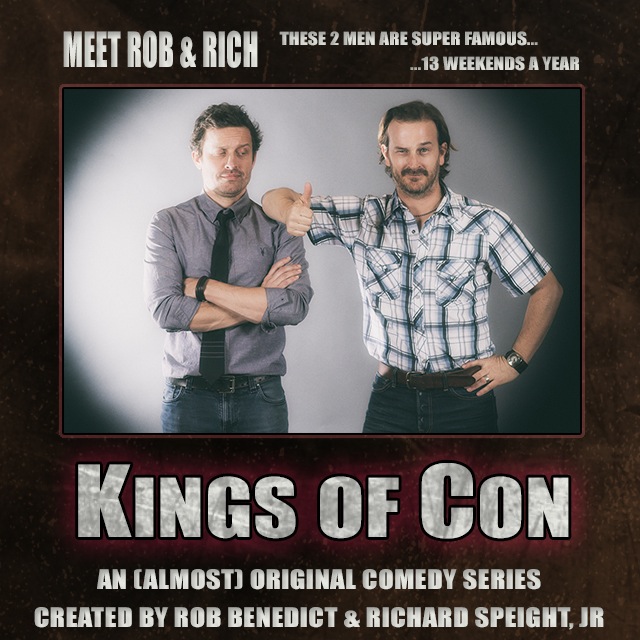
Meanwhile, the Supernatural effort is more of a “reality-based” show set within the world of Supernatural fandom. It too was once called “Con Man” but now it’s called Kings of Con and here’s the pitch:
$100,000 will cover production costs for the first three to five episodes, and Benedict says 10 have already been “roughly written and mapped out,” with a 10-minute teaser/pilot previously filmed. According to Benedict, “Our idea is that every episode will be a new city that we’re in — or rather, the suburb outside of that city where our hotel is! We’ve shot in our actual conventions too, so you’ll get a POV of the view from the stage during karaoke, and a bird’s-eye view of the merchandise room, the lines, the crowds, the energy… in a utopian world, we want to continue to capture all that in each episode.”
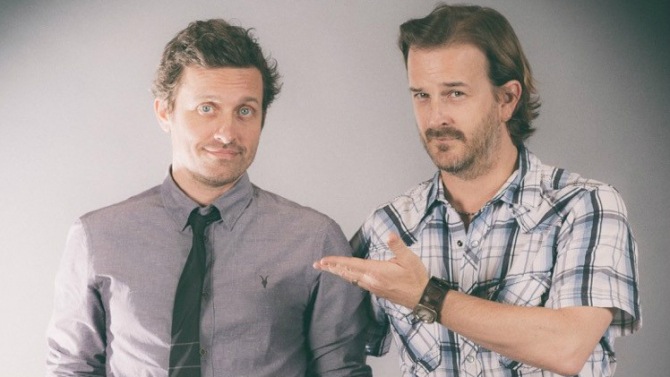
This effort has already raised $57,000 of the $100,000 requested..in fact it raised about $7k while I was writing this post, so I think this will hit its target as well. It only launched yesterday and they are aware of the rival show:
While Benedict and Speight acknowledge that the concept sounds similar to another crowdfunded comedy series inspired by two genre actors’ convention experiences (Alan Tudyk and Nathan Fillion’s “Con Man”), their series has been in development for over a year, and is wholly inspired by their “real life exploits within this ‘Supernatural’ convention world — with our own creative, fictional spin,” Benedict tells Variety. “While it is nowhere near reality TV, it will be shot naturalistic and play on our relationship with each other and others through scripted and semi-scripted dialogue. Rich and I have developed quite a rapport over these few years, and quite a unique, combustable and comical relationship. We’ve been to the front lines, so to speak, and have been in the thick of it, all around the world, together. Really, this show is about Rob and Rich, and the conventions will serve as a unique backdrop for that quirky relationship.”
These are not the first efforts in the “nerdlebrity goes to a con” genre. The trailblazer in this regard is Mark Hamill’s Comic Book: The Movie in which he portrays Donald Swan, a documentary filmmaker who goes to Comic-Con and meets a lot of weird people. Made in 2004, this features the state of the art autograph circuit of the day, such as Stan Lee, Chase Masterson, Bruce Campbell and Kevin Smith in cameos.
Then there was Morgan Spurlock’s Comic-Con IV: A Fan’s Hope, the 2012 actual documentary about people who go to Comic-Con. Actually, I think Bruce Campbell also made a short film about fans and fandom, but no one has ever seen it.
Huh well whaddaya know.
I have my own idea for a movie set at a comic-con, but it’s so explosive that I can’t even talk about it here. I’ll just give you the elevator pitch: Clue + Comic-Con. Interested parties can contact my agent.
Blog: PW -The Beat (Login to Add to MyJacketFlap)
JacketFlap tags: The Muppets, brackets, Top News, tournaments, Culture, Star Wars, Add a tag
March Madness begins, as the “First Four” play in Dayton to see who will advance into the first round of the NCAA Men’s Basketball tournament.Now, it’s no secret that sports fans are geeks. (Arcane knowledge, fannish clothing, cosplay, fan gatherings, undying loyalty even when stuff sucks, hatred of stuff that’s just a little bit different, fantasy battles, questionable hygiene, dining etiquette…)
Of course, there is that subtle Venn diagram overlap of “wonks” and “sports statisticians” which comes to the fore during March Madness, as millions seek to find the perfect bracket to win the adulation of millions (or at least your office mates).

 I admit… I follow the trivia… and I like the underdogs, or, this year, the anteaters. (Sadly, the Banana Slugs of UC Santa Cruz are Division III.]
I admit… I follow the trivia… and I like the underdogs, or, this year, the anteaters. (Sadly, the Banana Slugs of UC Santa Cruz are Division III.]
But what about other brackets? Why should sports fans have all the fun?
For your enjoyment, we offer the following Geek brackets:
Star Wars
Two different brackets, one of which is official.
Who will join Obi-Wan and Yoda as champion? StarWars.com has the official bracket!
Meanwhile, there’s a Jedi tournament going on, with each side to meet in the final! Jedi vs Sith!
The annual Geek Madness Championship, for gamers:
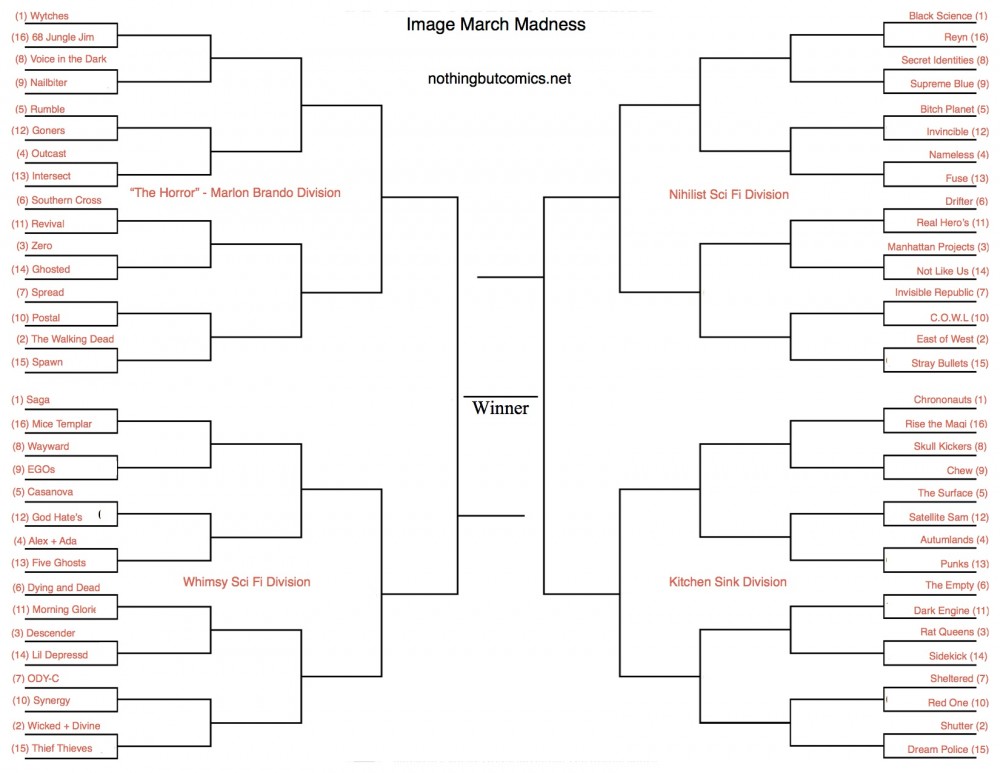 Nothing But Comics hosts an Image-specific tourney:
Nothing But Comics hosts an Image-specific tourney:
TheNBC! staff has taken the top 64 Image books hitting the stands in March and broken them up into four divisions:“The Horror” – Marlon Brando Division, Whimsy Sci-Fi Division, Nihilist Sci-Fi Division and The Kitchen Sink Division.
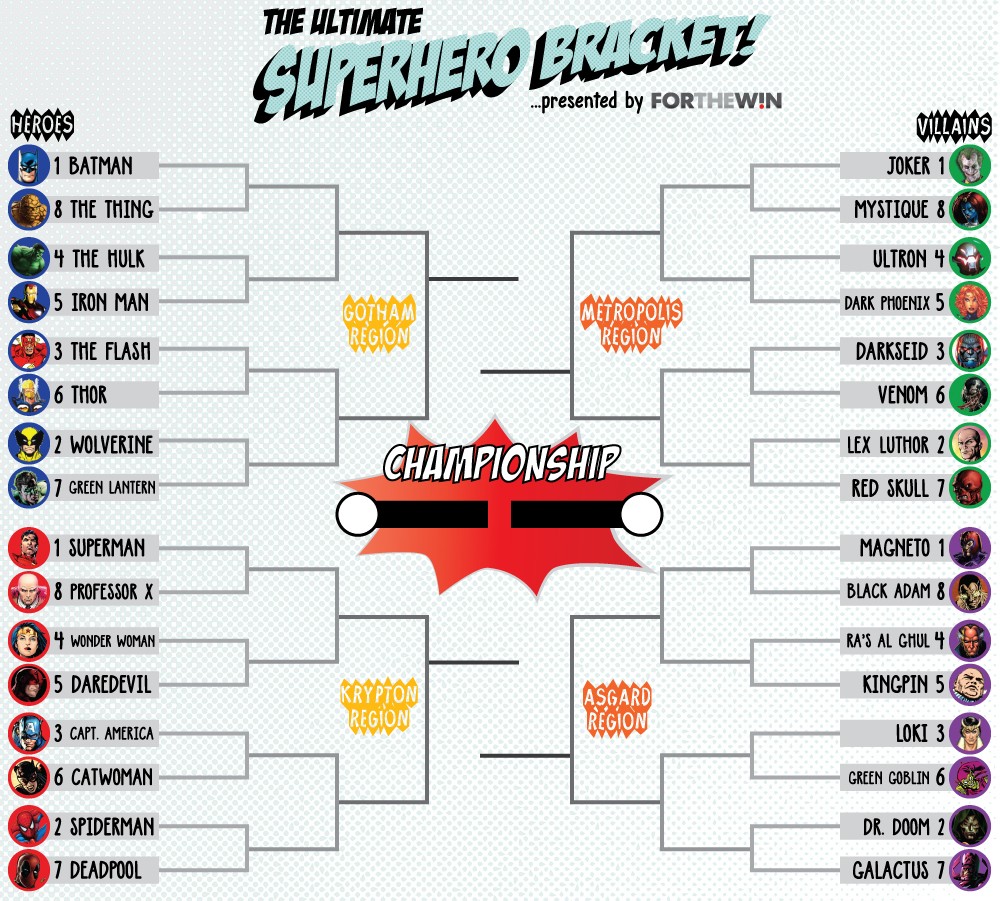
While USA Today plays “Heroes and Villains“:
To settle that last question, we need your help. We’ve set up a 32-character bracket, as part of Bracket Madness month, and each day you can vote for your favorite character to advance to the next round. Votes will be tallied at midnight eastern time, and the winning character will advance to the next round.
…and Cosmic Comix & Toys in Cantonsville, Maryland, offers “Cosmic Madness 2015“!
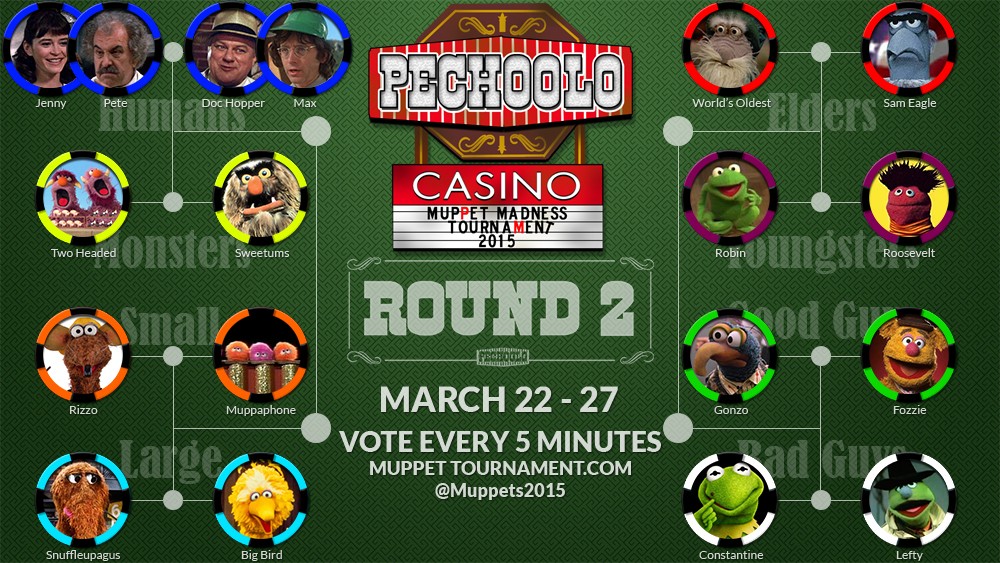 Muppet Madness gets some major corporate sponsorship from a casino:
Muppet Madness gets some major corporate sponsorship from a casino:
[WHAT?! Big Bird v. Snuffie?]
The Disney Nerds Podcast hosts: MOVIE MADNESS 2015
Movie Qualifications: Only full length first run features released by Walt Disney Studios or Pixar qualify. No Direct to DVD or releases by other Disney owned studios. Ranking was determined by a Disney Nerds Podcast Team. This is YOUR personal favorite list, we are not asking for the most popular, the most artistic, the most awards, this is about the movie that you are most fond off for what ever reason it may be. What is YOUR favorite Disney animated feature!!
The WDW Radio Blog is sponsoring a tournament to select the best attraction at WDW’s Magic Kingdom!
Want to pit various fandoms against each other? Epic Nerd hosts a multi-franchise-fandom bracket!
Top seeds: Batman, Super Mario, Lord of the Rings, Star]Trek. [Hmmm…anyone want to fanfic that team-up?]
A nine-member selection committee of the biggest nerds and geeks I could gather (myself included) examined franchises from the genres of fantasy & adventure, science-fiction, video games, and comics.
After evaluating them using four criteria: modern popularity, commercial success, historic importance, and artistic value, each franchise was ranked and seeded.
…and in a similar vein, which property should be rebooted? (Or exhumed, in some cases.)
Go to UnderScoopFire and vote!
In another tourney, the finals! What is the Greatest Geek Moment in History? FastCompany spends less than a week running the tourney!
Star Wars, The Internet, Ada Lovelace, DNA?
Okay… You probably need a break to get some refreshments…
Need to get into the spirit? Perhaps some Kentucky rye to go with the Wildcats? It’s MASH MADNESS!
Or maybe some brewskis?
How about hues instead of brews?
Or maybe some rhythms to go with those hues?
The Victory Formation hosts the Final 68: The Worst Things in Sports. Media, Fans, Athletes, and Etcetera are the regionals.
Tired of basketball? Playing out a 2015 March Madness Bracket of All 30 MLB Teams
Insider Higher Ed takes the NCAA bracket, and determines winners based on brains, not brawn!
It’s time once again to fill out those March Madness brackets, and what better way to predict the winner of this year’s National Collegiate Athletic Association men’s basketball tournament than to compare how the teams succeed in the classroom?
Here’s how Inside Higher Ed‘s bracket works: to determine the winners, we first look to the Academic Progress Rate, the N.C.A.A.’s multiyear measure of a team’s classroom performance. When two teams tie, we turn to the N.C.A.A.’s Graduation Success Rate, which measures the proportion of athletes on track to graduate within six years. In the event of a G.S.R. tie, we then turn to the Federal Graduation Rate, a slightly different formula that the government uses to track graduation rates.
This tournament’s championship round was a nail-biter, going into double overtime, with the teams tying on both the A.P.R. and the G.S.R.
…and then there are the Big Brains at Critical Theory who ponder the great question of our age: Of philosophy’s many personalities, which is most likely to ruin a sporting event?
Is it Diogenes, who rushes the field, rambling “I’m looking for an honest man!” while violently shaking Bill Belichick? Can that compare to the $8 hot dog ruined by Jacques Lacan who reminds you “the phallus is in the bun,” or Karl Marx’s multiple aborted attempts to retake the means to produce “the wave” for proletariat revolution?
Comics Should Be Good returns for their seventh annual 2015 DC/Marvel Comic Character Tournament! This time, it’s cinematic characters, and actors!
Or maybe your prefer SUPER ANIMALS!
South Park has their “Bro Down”.
What’s the MOST 90s band? (Not the best, but the one which best represents the 90s in music.)
Girls in Capes has their Sisterhood tournament. Final Four!
For sports widows…. Leading men of romance novels:
Got a favorite program on National Public Radio? KPCC offers a tournament!
ComicMix once again highlights webcomics!
Which TV should come back on the air? Pushing Daisies, or Firefly?
Best TV Theme [This is really disorganized. “Scooby-Doo”? Which one?! Should have been better researched.]
…and my favorite bracket:
Blog: PW -The Beat (Login to Add to MyJacketFlap)
JacketFlap tags: New Jersey, Culture, Rutgers University, Top News, Geek Week, University Life, Add a tag
 Rutgers University, the state university of New Jersey, is hosting their fourth annual Geek Week on campus!
Rutgers University, the state university of New Jersey, is hosting their fourth annual Geek Week on campus!
Yes. GEEK. Not “Greek”, but maybe Klingon…
As their website explains:
Geek Week is an annual week of events celebrating all things “geeky” at Rutgers University. From tabletop and video gaming, to music, cosplay, academic panels based on gender and ethnic diversity, and more, Rutgers Geek Week has been nationally recognized by organizations such as ACPA and San Diego Comic-Con, and featured guests such as Chris Hardwick, Nick Offerman, and Tory and Kari of Mythbusters. By focusing on the students and their passions, Geek Week seeks to make meaningful differences in students lives by providing opportunities for them to find community, be accepted, and gain exposure to non-familiar topics and experiences in geek culture.
There are lots of events scheduled!
SCHEDULE OF EVENTS
Sunday – March 22
Knight Slash 10
It’s the tenth one! Going five years strong, Knight Slash is a semesterly tournament organized by the Underground Gaming Society featuring games such as Persona 4 Arena, Super Smash Bros Melee, Project M, and many others. If you feel like you’re the best of the best, here’s your opportunity to show it!
Location & Time: Livingston Student Center, 12:00pm
Monday – March 23
Rutgers University Art Library, Speakers, Snacks, and Legos for Geek Week.
Krista White, Digital Humanities Librarian at Rutgers University- Newark and Zara Wilkinson, Reference and Instruction Librarian at Rutgers University- Camden will be speaking at the Rutgers University Art Library. Please stop by the Art Library any time during open hours to create a model at the Art Library Lego Playing Station.
Digital Humanities Librarian Krista White will discuss her involvement with the small press, indie tabletop RPG gaming scene. Krista is the co-founder of Galileo Games, Inc., publisher of “Bulldogs!: Scifi that Kicks Ass,” “How We Came to Live Here,” “Mortal Coil” and “Shelter in Place.” Krista invented KristaCon, a LongCon format for playing robust, tabletop role playing games at conventions. She’ll be in the Art Library to talk about the indie RPG scene and answer questions about gaming and publishing.
Zara Wilkinson, Reference and Instruction Librarian at Rutgers University-Camden, will discuss the depiction of female characters in comics and comics adapted to other media. In 2015, Zara was the co-organizer of Buffy to Batgirl, an academic conference devoted to women in science fiction, fantasy, and comics. Buffy to Batgirl was attended by over 150 scholars and students. Zara also organizes events at Camden Comic Con, Camden’s first comics convention, which is held annually on the Rutgers-Camden campus in Camden, NJ.
Location: Rutgers University Art Library
Time: 1:30PM
Geek Week Trivia Night : One Quiz to Rule Them All!
Come out and enjoy an awesome night of geeky trivia! We’ll have questions covering the wide breadth of geekdom, everything from Star Wars to Game of Thrones, tabletop gaming to Internet culture. Bring your friends and compete as a team (up to four members) or come to meet some fellow geeks! The top three teams will win some fun prizes!
1st Place: Reserved Front Row Seats for George Takei’s lecture on Wednesday, Rutgers Cinema Movie passes, and Geek Week Prize packs for each team member!
2nd Place: Rutgers Cinema Movie passes, and Geek Week Prize packs for each team member!
3rd Place: Geek Week Prize packs for each team member!
To pre-register and reserve your spot, click here!
Location: Livingston Student Center, Coffeehouse
Time: 8:00PM
Tuesday – March 24
NASA scientist Dr. H. Philip Stahl Lecture
Prominent NASA scientist Dr. H. Philip Stahl will be presenting about the James Webb Space Telescope (JWST), which will be the world’s largest telescope when launched. Dr. Stahl is the 2015 Immediate Past President of the International Society for Optics and Photonics (SPIE) Student Chapter and an Optics Lead for the JWST. The lecture will take place on Tuesday, March 24th at 5 pm in the Fiber Optics Auditorium on Busch Campus. There will be a “meet and greet” with light refreshments at 4:30 pm, and a sandwich dinner at 6 pm. The event is co-hosted with Rutgers SPIE Student Chapter and Rutgers SciFest, and is part of the Rutgers Geek Week itinerary.
Location: Fiber Optics Auditorium, Busch Campus
Time: 4:30PM Meet & Greet, 5:00PM Lecture, 6:00PM Sandwich Dinner
Nerd Girl Panel
Join us at our annual Nerd Girl Panel where this year we are confronting misogyny in nerd culture with topics ranging from GamerGate to Cosplay is Not Consent. Come be a part of the conversation with panelists from across the nation bringing riveting stories related to their first-hand exposure to misogyny through their work as YouTube personalities, film director, and social justice and comics bloggers.
This year’s panel features panelists from the YouTube sensation Video Game High School, Rocket Jump Studios’ Lauren Haroutunian; Danni Danger of the The Valkyries and Weird Girls YouTube Channel; Mikki Kendall, founder of HoodFeminism.com; and Ivy Noelle Weir of The Valkyries and Women Write About Comics. Click here for more information on the panelists.
Location: Douglass Student Center, Trayes Hall
Time: 8:00PM
Wednesday – March 25
An Evening With George Takei [SOLD OUT]
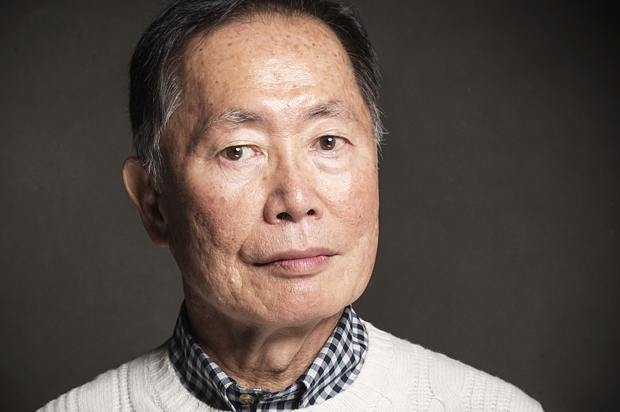 Ohhh Myyy! We are ecstatic to have the legendary George Takei as our keynote. With his work all over the spectrum from the sci-fi hits Star Trek and Heroes, his social media empire, LGBTQ activism, bestselling books, and a musical theater project on Japanese internment camps, he has a mega-ton to share!
Ohhh Myyy! We are ecstatic to have the legendary George Takei as our keynote. With his work all over the spectrum from the sci-fi hits Star Trek and Heroes, his social media empire, LGBTQ activism, bestselling books, and a musical theater project on Japanese internment camps, he has a mega-ton to share!
Spend a captivating evening with the legendary George Takei. Hear how this award winning author, star of the sci-fi hits Star Trek and Heroes, an LGBTQ activist, and Japanese internment camp survivor uses his personal stories and social media empire to educate and inspire others.
This event is free, but guests are encouraged to secure a ticket in advance by visiting rupa.rutgers.edu. Tickets will be available on Monday, March 2 at 2PM. This event is open to the public with a limited number of tickets available for non-Rutgers students.
George Takei Event Ticket Policy:
Limit TWO (2) tickets per person.
There are a limited amount of guest tickets available for this event.
Guests DO NOT need to be accompanied by a Rutgers student.
Anyone under 18 MUST be accompanied by an adult.
Everyone should have some form of identification when checking in at the event.
Parking Information:
Visitors to the University may park in Lots 26, 30 (behind the College Avenue Gym) & College Avenue Deck without permits. Faculty, Staff, and Students must park only in lots they are authorized to park in.
This event is proudly co-sponsored by RUPA, Rutgers Geek Week, Student Life, SciFest, Center for Social Justice Education & LGBT Communities, and the Asian American Cultural Center.
This event is the keynote lecture for Rutgers Geek Week, GAYpril, and Asian Pacific American Heritage Month. For a full listing of Geek Week events, visit geekweek.rutgers.edu.
Location: College Avenue Gym
Time: 8:00PM
Thursday – March 26
Movie Night!
Join us for a free movie with all your nerdy friends. Title TBD.
Location: Rutgers Cinema, Livingston Campus
Time: 8:00PM
Friday – March 27
Night of the Living Costume Dance Party, Part IV
As always,we try to pack as much geeky awesomeness as possible into one single night. Amazing musical guests, game swaps, gaming tournaments, a costume contest, geeky vendors, tons of food and so much more.
This year’s Night of the Living Costume Dance Party will feature live art performances from the nationally acclaimed Super Art Fight collective, as well as live music from Wizard Folk Rocker Lauren Fairweather, and nerdcore rap from Tribe One and Adam WarRock. Click herefor more information on the performers!
We will also feature geeky vendors from Super Sox Shop, Sprites of Passage, Twinny Shoppe, and Frosted Treats. Click here for more information on the vendors!
Harry Potter Alliance’s annual book drive, Accio books, will also be collecting books at the finale event to promote literacy all over the world. Last year alone, 53,000 books were donated, thousands of which were sent to an “Apparating Library” in Detroit’s Brightmoor Community Center. While we don’t yet know which community will be chosen as this year’s target site, Muggle Mayhem hopes to join in on the action, and we hope you’ll help us! You’ll even get a nifty pin in the process!
The Board Gaming Club will also be running their Board Game Appreciation Night with gamers of all experience levels. All are welcome, if you’ve never even played Monopoly or you’re the traitor snubbing, city building, dice rolling king of all things cardboard and plastic on a table!
It’s nerd nirvana! Don’t miss it.
Location: Busch Student Center, MPR
Time: 8:00PM
Saturday – March 28
RU SciFest
SciFest is an afternoon-long event celebrating the fun in science. Our day starts with demonstrations by Mad Science in ARC 103, followed by an open series of interactive “sidewalk science” activities put on by a collaboration of Rutgers science clubs, held in the Life Sciences Building (with free food!). Our finale in ARC 103 will feature the Chemistry Department’s own Bob Porcja in an explosive presentation. At the end of SciFest, we will raffle off a variety of science-themed prizes!
Location & Times: Busch Campus
Allison Road Classroom Building (11:15AM-12:30PM)
Life Science Building Atrium (12:30PM-2:45PM, food served at 1:00PM)
Allison Road Classroom (2:45PM-5:00PM)
Rutgers eSports presents The Scarlet Classic
The Scarlet Classic is the first large-scale tournament held by Rutgers eSports. The tournament runs from the afternoon to the late evening and features 6 of the most prominent eSports in the Rutgers community and the world. These include: Super Smash Bros. Melee, Dota 2, League of Legends, Starcraft II, Counter-Strike: Global Offensive, and Hearthstone. Attendees will participate and spectate at least one grand final set for each eSport. Anyone who is interested in participating or spectating at the event should visit esports.rutgers.io for more info.
Entry is open to everyone in the Rutgers eSports community. Prizes are the glory of winning the Scarlet Classic and possibly other prizes.
Location & Time: Livingston Student Center, 4:00pm
UPDATE:
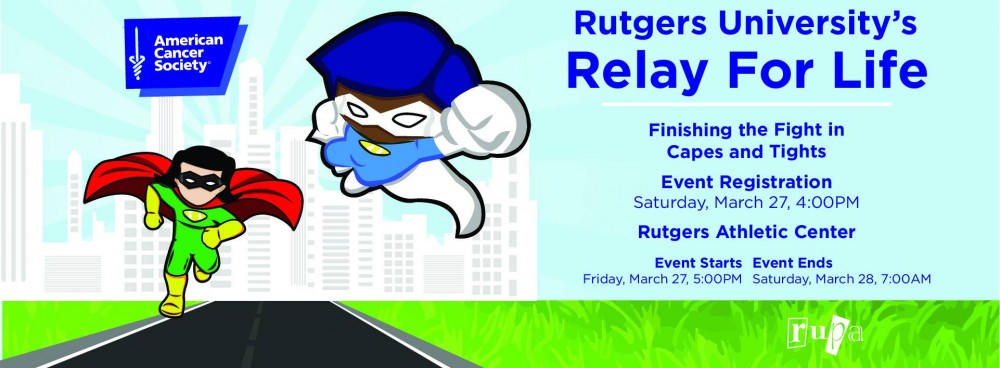 RUPA is sponsoring a fundraiser for the American Cancer Society.
RUPA is sponsoring a fundraiser for the American Cancer Society.
Blog: PW -The Beat (Login to Add to MyJacketFlap)
JacketFlap tags: Cartoonists, Culture, First Second, Breaking News, Top News, James Kochalka, The Glorkian Warrior, Interviews, Add a tag
By Cal Cleary and Harper Harris
James Kochalka, the first Cartoonist Laureate of Vermont and an Ignatz and Harvey award winner, has had quite a varied career, ranging from fronting his own band (James Kochalka Rockstar), to creating comics, to collaborating on video games. His long running online comic strip American Elf continues to have a strong fan base, and his SuperF*ckers comic book has become a popular animated series on YouTube’s Cartoon Hangover channel. His newest work, the Glorkian Warrior series, sees the release of both a video game based on its characters and the second book in the series, The Glorkian Warrior Eats Adventure Pie. We got a chance to chat with Kochalka regarding his career as well as his lovably bumbling hero, the Glorkian Warrior.
How did you get started as a cartoonist?
Professionally? Well, that road began when I bought an early issue of Eightball by Dan Clowes. Then, a couple months later I saw there was an interview with him in The Comics Journal, so I bought that. I had never encountered that magazine before. In The Comics Journal I think I saw something about some mini comic, and decided to order it through the mail. Before very long I trading my own mini comics with other cartoonists through the mail, and soon after that I was a full time professional cartoonist. It all happened within a period of about two years or so… from discovering Eightball to becoming a professional cartoonist and quitting my job as a waiter at a Chinese restaurant.
Did you read a lot of comics as a kid, or was it something you got into later as an artist?
I read them constantly as a kid, and drew them constantly too. I have over 2000 pages of comics saved that I drew when I was a kid. There was only a very brief period of not drawing comics… the first couple years of college I didn’t draw any comics, but the rest of my life I was always working on something. Long before I knew that mini comics were a “thing” I was making them and selling them to my friends at school. I drew my first graphic novel when I was a kid in the 1970’s… which probably marks it as one of the first graphic novels ever drawn, although noone has seen it beyond one of my childhood friends.
The Glorkian Warrior has been a resilient idea, starting with a short comic for Pop Gun, going into a Kickstarter-funded video game with Pixeljam (Glorkian Warrior: The Trials of Glork), before your current three-book deal. What is it that keeps bringing you back to Glork?
I just love to draw him. As soon as I did the first little doodle of the guy, he just felt so real to me, so alive. Basically that’s how I create my characters, I just doodle until one of the doodles has an undeniable spark of life.
Now, with Glorkian Warrior… I was working on this at the same time I was working on my autobiographic comic, the American Elf diary strip. And then when I quit American Elf, and my elf-avator stand-in was gone, I suddenly started to think of Glork as my stand-in. The spark of life that Glorkian Warrior has is my spark of life. What makes me a living being is the same thing that imbues Glorkian Warrior with life.
I hope that doesn’t sound too weird. I just like to draw him. He’s elastic and springy, and he does silly things.
What made you go with First Second as a publisher for the Glorkian Warrior series?
Excerpt from The Blue Drip (1976)
I thought the book would fit in well with their line, and I wanted to see what a new publisher could do for me. I asked Top Shelf’s advice before bringing it to another publisher, and they were all for it. I don’t need permission to do books with other publishers, but I always talk it over with Chris Staros before I do.
Your work has had lots of multimedia crossover…with SuperF*ckers you had the animated series (which you did a voice on too), and with Glorkian Warrior you’ve got the video game. Were these things you thought of initially when formulating the characters, or just natural extensions of the kinds of stories you wanted to tell?
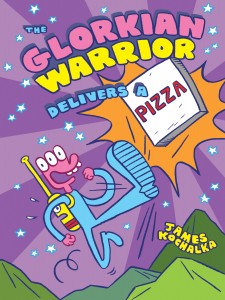 I just love making art, music, anything. I just like making stuff, anything, all the time. I like writing songs, I like making sand castles, I like inventing new recipes, I like to draw, I like to design board games, I like to invent drawing games. I also like to move my body and dance, or swim, or hike in the woods. I just feel like a creative, active life is more fun.
I just love making art, music, anything. I just like making stuff, anything, all the time. I like writing songs, I like making sand castles, I like inventing new recipes, I like to draw, I like to design board games, I like to invent drawing games. I also like to move my body and dance, or swim, or hike in the woods. I just feel like a creative, active life is more fun.
Regarding, Glorkian Warrior I came up with the basic idea for the video game before I started drawing the comics, but then I started drawing the comics before I started actually making the game.
You’ve obviously got a pretty wide range of work…what was it like going from something like SuperF*ckers to Glorkian Warrior?
Easy. The transition is easy. Whether I’m working on books for adults or books for kids I feel like I’m still exploring the fundamentals of human nature.
What inspired you to write books aimed at a younger audience?
First it was accidental. I wrote Monkey Vs. Robot and Peanutbutter & Jeremy and Pinky & Stinky thinking I was making them for an adult audience. Kids just happened to like them. Then once I had my own kids I started drawing books with them in mind as my target audience. So the Johnny Boo, Dragon Puncher, and Glorkian Warrior books were all written as bedtime stories for my own kids.
You were Vermont’s first Cartoonist Laureate. What was that experience like?
It was like being named the State Flower. I’ve always been proud of being a Vermonter, but it was an amazing feeling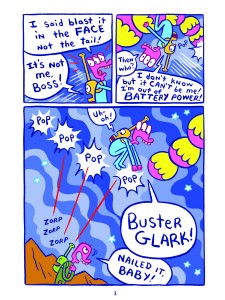 to think Vermont is proud of ME. Honestly, it just felt so good I think the good feeling might last the rest of my lifetime if I’m lucky. And every time a new Cartoonist Laureate is named, I feel like I’m being honored all over again. Ed Koren, the amazing New Yorker cartoonist, is the current Cartoonist Laureate of Vermont. He’s also a volunteer fireman in the town where he lives. Anyhow, he called me up for advice a few times leading up to his inauguration. It was rather amazing to be in the position of offering advice to such a seasoned master of cartooning. Oh, and we did a drawing together about it. That was really fun.
to think Vermont is proud of ME. Honestly, it just felt so good I think the good feeling might last the rest of my lifetime if I’m lucky. And every time a new Cartoonist Laureate is named, I feel like I’m being honored all over again. Ed Koren, the amazing New Yorker cartoonist, is the current Cartoonist Laureate of Vermont. He’s also a volunteer fireman in the town where he lives. Anyhow, he called me up for advice a few times leading up to his inauguration. It was rather amazing to be in the position of offering advice to such a seasoned master of cartooning. Oh, and we did a drawing together about it. That was really fun.
One of the most charming things about the Glorkian Warrior stories is the fantastic hand lettering. Do you feel lettering plays a strong role in the way you tell stories?
Yes! Oh thank you so much. I’ve been waiting for the last twenty years for someone to notice that there is something special about my lettering. Secretly I’ve always coveted a “best lettering” Eisner award, I don’t know why. Partly because it’s probably the worst Eisner award, the most laughable. But also because lettering is actually incredibly important in comics. Meaning is conveyed through the artistry of the lettering, or at least it can be if you do it well. I try to use my lettering to convey emotion, it’s one more tool to that effect in addition to the words themselves and of course the drawings.
I also letter with a brush and ink, which I think very few people do. Most letter with a pen. And I know why, it’s because lettering with a brush is outrageously difficult. For several years I’ve inked my taxes with a brush and ink… but that’s probably a colossal waste of my time.
What is your technique when it comes to illustrating the Glorkian Warrior books? Have you found your style changing dramatically with new technology?
I draw with a brush and india ink, but I do all the coloring on the computer. I use a Cintiq, so I can draw the color right on the screen. So, all the swirling colors in the backgrounds of the Glorkian Warrior books were drawn on the Cintiq screen, in photoshop. Yeah, that’s a big change. I wouldn’t be able to do that without the Cintiq or something like it.
The Glorkian Warrior stories tend to have an interesting shaggy dog structure. How do you go about plotting these stories? And how hungry are you when you’re writing them?
I write them fairly stream-of-consciousness style, and then I go back and edit to give them some kind of narrative structure. There’s just enough, I think, so you feel like maybe something actually happened.
I’m hungry all the time, except when I’m drawing or when I’m full.
What were your inspirations for the original characters Glorkian Warrior and Super Backpack? Are you drawing from any other bumbling hero analogs?
 It comes from me carrying my sons on my back or shoulders when they were little. I sometimes still like to lift my 11 year-old up on my shoulders and carry him around. I plan to continue to carry them both until I’m just not physically able. Anyhow, I’m the bumbling hero. The bumbling hero is me.
It comes from me carrying my sons on my back or shoulders when they were little. I sometimes still like to lift my 11 year-old up on my shoulders and carry him around. I plan to continue to carry them both until I’m just not physically able. Anyhow, I’m the bumbling hero. The bumbling hero is me.
By the end of the third book it should be clear that the Glorkian Warrior graphic novels are a sprawling metaphor about fatherhood and raising children.
I know you’re passionate about video games, and Baby Alien seems like the cutest homage to Super Metroid I’ve ever seen. Do you have any plans or hopes to work on another video game anytime soon?
Yeah, I love the baby Metroid from Metroid 2. I was definitely inspired by that for Baby Alien. I also took inspiration from Space Invaders and also my cats. My Baby Alien is like a space invader with a cute kitten face who sucks on your head like a baby Metroid.
Gosh I hope I make another video game. I’ve been designing some games, but I need to find a developer who’s willing to take them on and work with me. But if Glorkian Warrior is the only commercial video game I ever make, at least I had fun and it’s a good one. I’ll never stop designing new games in my mind, though.
A few years ago I invented a new version of chess that I’d like to turn into an iPad app, and I may have just found 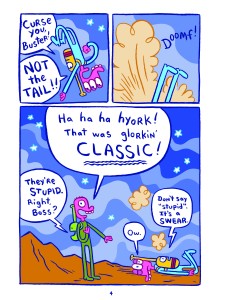 some guys who want to make it. We’ll see if they can handle it. Last year I invented a really cool new way for three people to play tic-tac-toe. I amaze myself with this stuff, probably more than I amaze anyone else.
some guys who want to make it. We’ll see if they can handle it. Last year I invented a really cool new way for three people to play tic-tac-toe. I amaze myself with this stuff, probably more than I amaze anyone else.
What can readers look forward to in the third volume of Glorkian Warrior?
Gonk joins the Junior Junior Glorkian Warriors, we finally meet the Glorkian Super Grandma, and there’s a new villain introduced: Quackaboodle the Space God.
Any other upcoming projects you’re excited for readers to get their hands on?
Yes! I’m making another animated cartoon, a short pilot episode, for a major kids network. I think I’m not supposed to talk about it, and it’s killing me to keep quiet.
The Glorkian Warrior Eats Adventure Pie will arrive in stores near you from First Second on March 17th.
Blog: Nathan Bransford (Login to Add to MyJacketFlap)
JacketFlap tags: Culture, The Bachelor, Add a tag
I make no secret of my love for the TV spectacle otherwise known as "The Bachelor." We have had some incredible journeys together. And yes, I'm in it for the right reasons.
What I love about "The Bachelor" is that it manages to transcend its utterly insane premise (man/woman searches for love by dating 25 people simultaneously, publicly breaks up with each one at a "rose ceremony") with a mix of sincerity, self-awareness and psychological spectacle.
"The Bachelor" is widely regarded as the ultimate of lowbrow culture, and yet there's this strange fact: it's the most widely watched show among 18-49 year olds who make more than $150,000 a year.
As Fifty Shades of Grey dominates the box office and critics largely dispense with trashing it in favor of a spirit of, "Whatever, it does what it's supposed to do well," I'm wondering if we're entering a time when there's no such thing as highbrow or middlebrow or lowbrow.
Is this the era of the unibrow?
I'm not the first to wonder this, a few months back the Bookends column at the New York Times debated just this topic (as well as revealing the etymology of "highbrow," which got its start in the eugenic-leaning "science" of phrenology. Yikes!)
Thomas Mallon argues that culture has benefited from the collision of art at all levels, noting for instance, "does anyone believe that the American short story has improved by making its initial appearance in literary quarterlies never seen by any brows but the highest?"
Pankaj Mishra argues that the profit motive has leveled out the brows, forcing auteurs to be crowd-pleasers, and obliterating individuality.
Personally, I think the explosion of voices in the world brought to us by the infinite choice of the Internet means that anyone hoping to be heard must also, by necessity, entertain. Even those aspiring to be highbrow and express complexity of thought and emotion must also bow to the reality that they need to capture eyeballs.
Think of John Oliver, wrapping serious advocacy journalism in comedy, or the recent trend of literary genre fiction like Station Eleven.
What do you make of this? Are we worse off because it's hard to imagine a Proust, or even a David Foster Wallace, gaining cultural ground in 2015? Or is a muddling of brows a sign that culture is democratizing?
Art: Retrato del Cardenal Inquisidor Don Fernando Niño de Guevara by El Greco
Blog: Nathan Bransford (Login to Add to MyJacketFlap)
JacketFlap tags: Culture, Add a tag
New York Times magazine has a fascinating article about people whose lives have been destroyed by ill-considered moments on the Internet and the virtual lynch mobs that descended upon them (something I've posted about in the past).
I find this phenomenon pretty terrifying, especially as someone who has blogged for eight years, written over a thousand posts, and said various things over the years that have either been stupid or completely misperceived or both.
Whatever you make of whether the people in the article "deserved" what they had coming to them, I have a hard time seeing how Internet vigilante justice is something that is any way beneficial.
What do you think? Do you trust that the punishment fits the crime? And once a virtual mob starts, how can you stop it?
Art: The Battle of San Jacinto by Henry Arthur McArdle
Blog: PW -The Beat (Login to Add to MyJacketFlap)
JacketFlap tags: Top News, Rebecca Mock, Longform, Diplo, Culture, Commentary, Add a tag
by Zachary Clemente
Last week, musician and producer Thomas Wesley Pentz (AKA Diplo) teased his upcoming collaboration with Missy Elliot on Snapchat, a video-sending service that’s being used as a new method of digital promotion among musicians. The video played a snipped of the track over a popular animated illustration by Rebecca Mock, a celebrated artist who has worked with The New York Times, The Walrus magazine, Nautilus online publication, and many more. Upon calling out Pentz on twitter for neither requesting permission to use her work or giving her credit, Mock was lambasted by Pentz and his followers. Much of the response Mock received is considered harassment, some of which is sexual in nature. He later uploaded the video to instagram, including a credit to her. The public side of the situation lasted about 2 days, resulting in a number of deleted tweets, a swell of write-ups, an apology of sorts, and potential legal action. Please be aware, the below contains potentially triggering verbal abuse.
.@diplo has shared one of my .gifs as background art for his music w/out asking me. my work isn't your clip art dude. don't sample my gif.
— Rebecca Mock (@rebeccamock) February 11, 2015
How many times have you heard someone attempt to describe the internet? For me, it typically involves poor metaphors accompanied by wild gesticulation around my head – it’s a vast semi-connected mess of stuff that relates to other stuff, but not necessarily in a way that we see or care about. It has a constant and amorphous give and take of action and reaction nested so far up, down, and around that conventional structures such as copyright law are brutally difficult to apply. There’s plenty of argument as to why that lack of structure can be a useful thing, but I bring it up because it means we have to operate under our own rules built out of even older structures, such as morals and good faith. These rules aren’t written anywhere nor could they be as I can’t think of a place other than Google where literally everyone goes, so they propagate, much like videos of felines, virally; an evolutionary ethos if you will.
Where I’m going with this is even though the way the letter of the law, especially when it comes to copyrighted material, doesn’t easily shake out now that someone’s creation can be a collection of pixels which is technically “reproduced” every time it’s viewed on another screen – there are easily recognizable values to adhere to in the use and application of this material. This is something Pentz should have been aware of and therefore, disregarded by choice.
What we get are a lot of slip-ups; someone will post something without credit and people will correct them. They’ll apologize then edit, credit, or pay and we’ll move on feeling, ideally, more knowledgable and satisfied with the overall experience. Unfortunately, this isn’t a common thing as one of the many, perhaps not well-exercised, behaviors that the internet enables is the speed with which we will share/retweet/reblog something. As an example, consider the number of times you’ve seen the first two panels of KC Green’s “On Fire” strip from his comic Gunshow without credit; it’s probably a lot. Community-based (read = not creator-based) aggregator platforms such as imgur, reddit, 9gag, and in the case of Pentz, Wifflegif, make it extraordinarily easy to view the action of sharing an animated gif or similar content as harmless fun. Nine times out of ten, I’m right there with you, but we have to acknowledge that we, as consumers of media, often take for granted the time and effort put into creating something and the fact that the little “share” button has become the preeminent way we show support.
Now, is this a bad thing? No, of course not – it’s a tool. But this tool isn’t a static object, it’s a means of communication that has foundational effects on how what is communicated is perceived, discussed, and framed. Sharing a book or a research paper is widely immune to this because you’re handling a source material that, by law, should be properly credited – all t’s crossed and i’s dotted. However, when a blog post (such as this one) is shared on twitter or facebook, there’s no guarantee that every embedded image is credited, and each subsequent sharer is less and less likely to ensure the inclusion of that credit. Instead of turtles, it’s the possibility of a passive application of the nonchalant disregard of creator ownership all the way down. Is it sometimes hard to tell how to approach this? Sure – but exercising a bit of caution can’t hurt.
Alright, where am I going with this, really?
Pentz should have known better is where this is going. For someone whose twitter feed is rife with easily digestible memes: images, gifs, hashtags used as inside jokes shared with millions, he is more than capable of knowing when something, like an image of a less-than-content cat with white text, is a product of the share-and-share-alike internet culture or when something is a labor of love and needs to be treated as such. As an experiment, I used Google’s image search, which allows you to make a query based on an uploaded image file, such as Mock’s “The Aftershocks”, embedded above. Here was my result:
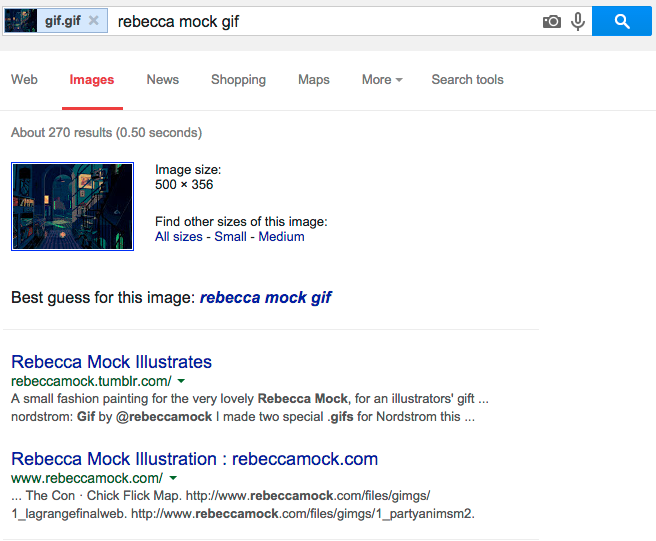 Almost like magic, right? Just for the naysayers out there: I created a new profile on my computer to ensure there was no associated search data or cookies present and renamed the file to gif.gif instead of a uniquely generated file name from tumblr. I chose to not edit the metadata of the image assuming that the uploader at Wifflegif did the same. The search completed in half a second, pulling up Mock’s name, blog, and portfolio website as the top hits. I posit that this process was so easy that even a savvy producer of digital music working on a computer 24/7 could do it, but I’ve been wrong before. This was Pentz’s first error, and easily the most excusable as there would still be a way to make amends afterwards.
Almost like magic, right? Just for the naysayers out there: I created a new profile on my computer to ensure there was no associated search data or cookies present and renamed the file to gif.gif instead of a uniquely generated file name from tumblr. I chose to not edit the metadata of the image assuming that the uploader at Wifflegif did the same. The search completed in half a second, pulling up Mock’s name, blog, and portfolio website as the top hits. I posit that this process was so easy that even a savvy producer of digital music working on a computer 24/7 could do it, but I’ve been wrong before. This was Pentz’s first error, and easily the most excusable as there would still be a way to make amends afterwards.
Unfortunately Pentz’s subsequent responses to Mock’s tweet calling him out and those of her supporters ruined any chance of recompense; some choice examples are featured below.
To me there’s a singular, and often under-discussed, place that all of these responses are coming from: Pentz’s feelings of entitlement. They come in readily customizable colors and sizes for all applications and can become quite pervasive if left unchecked; but the primary one here is that of being male.
Not only were Pentz’s responses abusive and flippant, they were wrapped in that soft nougat of everyday misogyny to make that made-to-serve blend we know as sexual harassment. It starts with a grotesquely sexually-charged rehash of a “have her cake and eat it too” strike aimed at Mock, moves to the emotionally abusive and gendered attack on Mock’s collaborator Hope Larson with some targeted misuse of a rather politically-feverish hashtag, slips back into cut and dry sexual harassment, and finishes with a brazen apathy for the effect Mock and her supports will have on his life complete with a touch of his, now patently gross, misuse of politically charged hashtags. Was that exhausting to read? Just try to imagine how it must have been for Mock. I doubt that the gendered form in which this harassment was conducted would have occurred if Mock and Larson were male; Pentz would’ve had to make do with attacks that were less sexual nature.
Clearly Pentz is of the “in for a penny, in for a pound” school of thought as it’s not only the comments directed at Mock that can be attributed to his entitlement.
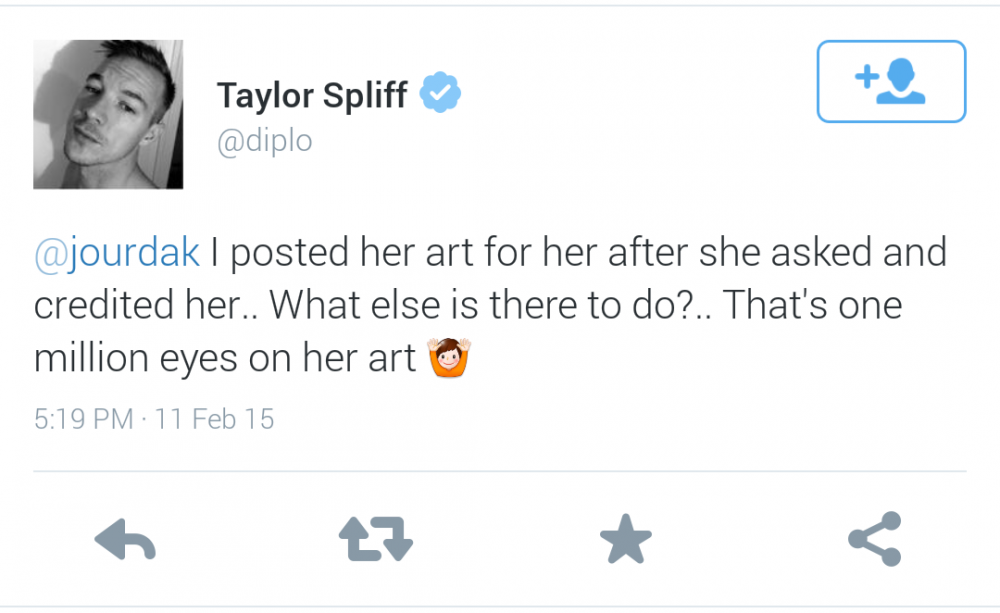 Here’s where Pentz’s disconnect really hits home for me: he genuinely thinks what he has said and did wasn’t wrong and likely still doesn’t; we’ll get into his apology later. He exposed her art to his large number of followers, that’s a good thing right? Eh – yes and no. Sure, she may ultimately get more work out of this debacle – but that wasn’t Pentz’s choice to make. He did not receive consent from Mock to utilize her work as a means of promoting his own. Yes, many people saw her animation; but inside the frame of his own promotion – undermining her work and agency as an artist. The disregard of this socially required and well-known form of consent is the most worrying aspect of this situation to me as it’s the genesis of all other actions Pentz has taken. Further proof of this is him linking her instagram account to the permanent upload of the offending video as a tepid means of offering credit; no consideration was taken into how she uses her account (accord to Mock – it’s more of a personal scrapbook) and has only opened up more avenues for Pentz’s irate fans to harass her and her friends. Pentz just doesn’t seem to give a damn about how this situation is negatively affecting peoples’ lives and probably never will. So why did he care now? Why did he even engage?
Here’s where Pentz’s disconnect really hits home for me: he genuinely thinks what he has said and did wasn’t wrong and likely still doesn’t; we’ll get into his apology later. He exposed her art to his large number of followers, that’s a good thing right? Eh – yes and no. Sure, she may ultimately get more work out of this debacle – but that wasn’t Pentz’s choice to make. He did not receive consent from Mock to utilize her work as a means of promoting his own. Yes, many people saw her animation; but inside the frame of his own promotion – undermining her work and agency as an artist. The disregard of this socially required and well-known form of consent is the most worrying aspect of this situation to me as it’s the genesis of all other actions Pentz has taken. Further proof of this is him linking her instagram account to the permanent upload of the offending video as a tepid means of offering credit; no consideration was taken into how she uses her account (accord to Mock – it’s more of a personal scrapbook) and has only opened up more avenues for Pentz’s irate fans to harass her and her friends. Pentz just doesn’t seem to give a damn about how this situation is negatively affecting peoples’ lives and probably never will. So why did he care now? Why did he even engage?
Because he can and no harm will come to him. Voilà, meet entitlement’s secret ruler: privilege.
While scrolling through his twitter feed as this unfolded, I saw many of his fans decrying Mock’s first tweet as unwarranted, stating that she should have contacted him privately to address the issue. Sure – that seems reasonable enough, except…how? In preparation for this post, I spent a good hour or so hunting far and wide for contact information that wasn’t his social media platforms and found nothing to work with. All I turned up were two email addresses associated with his record label, Mad Decent; I sent a request for a statement into that void and doubt that anything will come of it. I don’t know what they expect of Mock, but I doubt that there’s some kind of secret society of people who have more than 5K followers on twitter that exists exclusively so they can contact each other privately.
At the end of the day, what we have is a clashing of two different worlds: the comics world and the music industry where nothing is one-to-one. Mock is a freelance illustrator who has to handle her own day-to-day business whereas Pentz likely has a team of people working under him to manage his various projects; he has plenty of literal and figurative gates barring people from interacting with him in a way that he deems unfit. It’s hard to see this as a problem of any kind as both exist and work in a normal situation, in context to their respective fields. However, for this you simply need to take a look at their twitter followers to see that Pentz has been happily surrounded in an echo chamber of support; it’s impossible to meet an aggressor on the field when their side approximately outnumbers yours 260:1. He doesn’t know how good he has it and doesn’t care how awful he’s made it for Mock.
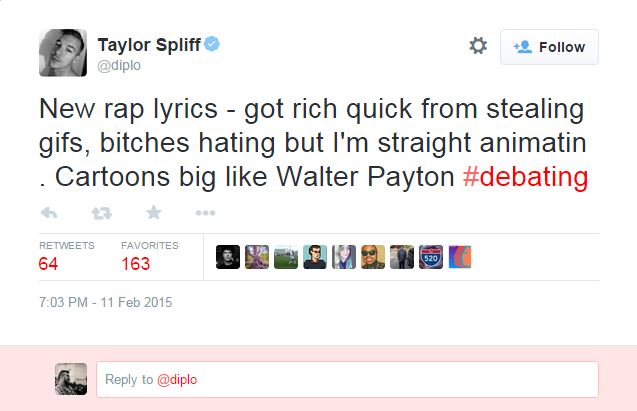 Now, the apology (also screencapped here in case it gets removed). I don’t know about you, but I really believe that he wrote it with earnest and thought his way through each and every bizarre use of incomplete ellipses…then promptly cast the whole thing aside as if nothing had happened. Befitting his previous behavior, he excuses himself by stating “I’m sorry thats my nature” and “I’m just a joking person and i don’t even take myself serious so how can i take you guys seriously.” Half-hearted at best, Pentz’s attempt to address Mock’s concerns only highlight the problem at play: he never got her permission to use her art and doesn’t see that as a bad thing. Even worse were the provided explanations for his terrible behavior, ending the note with “so maybe this is also a future apology to everyone on the internet who follows me”. We’re left with Pentz telling Mock that this situation is little more than a future anecdote to him; he can’t even complete an apology to her without undermining the validity of her experience.
Now, the apology (also screencapped here in case it gets removed). I don’t know about you, but I really believe that he wrote it with earnest and thought his way through each and every bizarre use of incomplete ellipses…then promptly cast the whole thing aside as if nothing had happened. Befitting his previous behavior, he excuses himself by stating “I’m sorry thats my nature” and “I’m just a joking person and i don’t even take myself serious so how can i take you guys seriously.” Half-hearted at best, Pentz’s attempt to address Mock’s concerns only highlight the problem at play: he never got her permission to use her art and doesn’t see that as a bad thing. Even worse were the provided explanations for his terrible behavior, ending the note with “so maybe this is also a future apology to everyone on the internet who follows me”. We’re left with Pentz telling Mock that this situation is little more than a future anecdote to him; he can’t even complete an apology to her without undermining the validity of her experience.
There’s a lesson to be learned here, I like to believe. There’s an opportunity for us to do better and find common ground when a dispute like this crops up. In this case, Pentz could have contacted Mock privately to diffuse the problem and address her concerns – creator to creator. Hell, in the most ideal of situations, they may have decided to collaborate in the future, sharing a laugh over the amusing way their paths crossed. However, thanks to Pentz – this is not to be. I urge you to check out this post from game designer Joshua A.C. Newman who resolved a situation with another game creator, Matt Rivaldi, over two similarly named titles hitting Kickstarter around the same time in a way that benefited both parties. He makes it look easy, because it is.
You can find Rebecca Mock’s work here and support her by purchasing a print or four. The image “The Aftershocks” was originally commissioned for an article on Medium.
Blog: PW -The Beat (Login to Add to MyJacketFlap)
JacketFlap tags: Breaking News, mariko tamaki, Jillian Tamaki, Skim, Top News, this one summer, Awards, Interviews, Cartoonists, Culture, First Second, Add a tag
By Harper Harris
Mariko and Jillian Tamaki‘s This One Summer was one of the most highly acclaimed graphic novels of 2014, popping up on a great number of top ten lists as well as winning an Ignatz Award for Best Graphic Novel. To say it was an attention grabber for the already heralded Canadian creators is an understatement.
Just last week, this tale of two childhood friends on the cusp of adolescence was awarded with the prestigious Caldecott Honor, being the first ever graphic novel to do so, along with the Printz Honor (and joins Gene Luen Yang‘s Boxers & Saints as the only other graphic novel to notch that award as well).
Mariko and Jillian were kind enough to join me for a brief Q&A regarding the recent wins and the creative process on this landmark work.
Where were you each when you learned you won the Caldecott Honor? Who called whom?
Jillian Tamaki: I was in bed.
Mariko Tamaki: I think we eventually texted each other about it.
Is there a sense of accomplishment or “I’ve made it” for winning such a prestigious award? Jillian, how does it compare to your Eisner nominations or the Ignatz award that This One Summer also received?
JT: The feeling is one of gratitude. I’ll never felt like “I’ve made it!” until I’m like a hunched-over old person still making things.
Is it more gratifying to get recognition outside of the world of comics, which you’ve done multiple times at this point?
JT: Both are gratifying. Honours granted by librarians are special to me because it represents a knowledgeable, discerning audience that actually works with young people. Honours granted by comics people are special because it means perhaps I am creating something of value within the medium.
Were you relieved that you both got nominated for this award, rather than one or the other as in some past awards?
MT: When one of us gets nominated, I generally see it as a misconception of how graphic novels work. So, yes.
Do awards matter to you? I hope that’s not a weirdly loaded question.
JT: Um, they are nice, yes. Especially when there is money attached, because comics are not lucrative. But I try to not let outside validation determine the micro and macro decisions I make as a creative person.
MT: I guess awards help sales. There are many awesome comics and books out there that have not been nominated, so we’re in good company either way.
This One Summer ended up on many top ten lists for 2014…how does it feel to have one of the most critically acclaimed OGNs of the year among fans? Is it rewarding to see that fans of more mainstream comics are picking up and really enjoying works like yours?
JT: Of course!
As cousins, were you making comics as kids together? When did you decide to pursue sequential art collaboratively?
MT: We lived in distant cities as kids, so there was little comics making. It wasn’t until we made our first mini comic of Skim back in…2006 (?) that we started working together.
How long has this idea been gestating, and how long did it take to actually script and illustrate This One Summer?
JT: It took probably 3 years in total. It took a year of solid work to do the final artwork.
MT: Roughly 6 months to script. Plus changes.
What was your working process on This One Summer? Especially since I understand you don’t live near each other? Was there an initial script first and then an art stage, or was it done in a more section by section basis?
JT: We Skyped a lot. Mariko scripts the dialogue with occasional actions. I do a sketch version. We edit it together, a lot. Then I do the final art.
Where were your individual high and low points in the creative process of this book? Were there any parts that drove you crazy or were difficult to pull off?
JT: The most difficult part was the editing of the sketch phase. As it is with any book, I’m sure.
When I started reading This One Summer, I almost thought it was autobiographical…do either of your personal experiences play a role in the story? Were any of the designs of the characters based on real people?
MT: Nope. There is an actual cottage area that inspired TOS, up in Georgian Bay, Ontario, which I highly recommend people visit.
What is it about the adolescent stage of life that attracts you?
MT: I think most people spend their whole lives trying to figure out how and what to be. As I understand it, it’s not something that stops with adulthood. I think adolescence is interesting because it’s the start of this process. Everything is just that much more on the surface that it is when you’re an adult.
I love how you use Rose and Windy watching horror movies as a kind of metaphor for seeing the world in a more adult way…are you big classic horror movie fans, or how did that aspect of the story develop?
JT: No, I am a chicken. It was easy for me to draw the freaked-out kids.
Your capturing of the pre-teen voice and body language is wonderful…where do you pull that from? Is it based on your memories, or did you embark on any research?
JT: I am fascinated by the storytelling potential of bodies. We are very attuned to what they are communicating and I like to stretch that to effect. Sometimes I get very hung up on tiny details that I’m sure no one will see, but I think it adds up to an overall sensitivity.
MT: I am a chronic eavesdropper. Although the other day on the subway I was pretty sure some kid called me out for doing it so, I’m going to have to learn to be a little less gleeful listening to teenagers talk.
Rose’s family is fraying apart for much of the book. Why was it important to highlight the onset of familial strife, particularly seen from the eyes of a younger character?
MT: Who doesn’t have a little familial strife in their lives these days? It would seem kind of weird to me not to include it, whether writing about kids or adults.
This One Summer is considered to be all-ages, but there are different elements that clearly resonate with adults, which sort of mirrors how Rose is beginning to see the world as well. Who do you feel is the intended audience for the book? Or do you feel like This One Summer is fairly wide-ranging in its appeal?
JT: I only think of a few ideal readers when I work on the book. Some of those readers are real people, some are imagined. They’re usually not young kids. Some are teenagers. Most are my age.
MT: I think a books audience is self selecting. I don’t see a 10 year old reading this book cover to cover. Beyond that I think the idea is to write about not for.
What made First Second your choice of publisher, and why return to them after Skim, specifically?
JT: Groundwood, which published SKIM, put out TOS in Canada, and they have done a wonderful job. First Second made sense in that they had very strong ties to the American library system, in addition to the Macmillan network. But I think it has been excellent having both publishers, as Groundwood can prioritize the Canadian industry. After all, we are Canadian authors and the content is largely Canadian.
How are your next individual projects coming along? Mariko, I understand you’re working on a new YA novel, and Jillian it sounds like you’ve got some more “irons in the fire” in addition to your work on Adventure Time.
JT: My webcomic “SuperMutant Magic Academy” comes out in book form in April from D&Q. Also in April, Youth in Decline is publishing a short story of mine called SexCoven. It will be part of their “Frontier” series.
MT: My next prose YA book, Saving Montgomery Sole, will be released by Roaring Brook/Penguin Canada in Winter 2016.
This One Summer is available through First Second and on sale at your local book retailer
Blog: Nathan Bransford (Login to Add to MyJacketFlap)
JacketFlap tags: Culture, Add a tag
You guys.
YOU GUYS.
Here's the story. Her new novel, "Go Set a Watchman" is one she wrote in the 50s and put aside.
Wow.
Blog: The Mumpsimus (Login to Add to MyJacketFlap)
JacketFlap tags: film, Writing, culture, apocalypse, guns, morality, Michael Haneke, Add a tag
A friend pointed me toward Sigrid Nunez's New York Times review of Emily St. John Mandel's popular and award-winning novel Station Eleven. He said it expressed some of the reservations that caused me to stop reading the book, and it does — at the end of her piece, Nunez says exactly what I was thinking as I put the book down with, I'll confess, a certain amount of disgust:
If “Station Eleven” reveals little insight into the effects of extreme terror and misery on humanity, it offers comfort and hope to those who believe, or want to believe, that doomsday can be survived, that in spite of everything people will remain good at heart, and that when they start building a new world they will want what was best about the old.I don't mean this post to be about Station Eleven, because I didn't finish reading it and for all I know, if I'd finished reading it I might disagree with Nunez. I bring it up because even if, somehow, Nunez is wrong about Station Eleven, her points are important ones in this age of popular apocalypse stories.
Let me put my cards on the table. I have come to think stories that give readers hope for tolerable life after an apocalypse are not just inaccurate, but despicable.
We are living in an apocalypse. Unless massive changes are made in the next few decades, it's highly likely that the Earth's biosphere will alter drastically enough to kill off most forms of life. At the least, life in the next 100-200 years is likely to be less pleasant than life now (if you think life now is pleasant). Writing apocalypse stories that mitigate these facts lulls us into complacency. Such stories are their own form of global warming denialism. (Of course, if you are a global warming denialist, go right ahead — write and enjoy such stories!)
Tales of surviving an apocalypse give us comfort fiction, a fiction predicated on identifying with the survivors and giving the survivors something worth surviving for.
It is highly unlikely that you, I, or anybody else would be a survivor of an actual apocalypse, and it is even more unlikely that, were we to survive, the post-apocalyptic world would be worth staying alive to see. To imagine yourself as a survivor is to evade the truth and to indulge in a ridiculous fantasy. To imagine yourself as a successful survivor — someone who doesn't suffer terribly before finally, painfully dying — is even worse.
To tell stories of apocalypse that seek to be at least somewhat realistic and yet are not as painful as stories of actual, historical catastrophes is sheer escapist fantasy. Apocalypse stories that do not want to be escapist fantasies must be as harrowing and painful as the most awful stories of the Nazi Holocaust, the Khmer Rouge's atrocities in Cambodia, the Rwandan genocide.
I'd think this would be obvious, but many people ignore the fact: to tell a story of an apocalypse is to tell a story in the midst of mass death.
To tell a story of apocalypse that is not limited to a small area — to tell a story of the end of the whole world — is to tell a story about mass death on a scale far beyond the worst historical atrocities.
To tell a story of apocalypse in which people's lives are not even as difficult or painful as the lives of millions and millions of people currently alive on Earth moves beyond escapist fantasy and into the realm of idiotic irresponsibility. (This, perhaps, is why some of the better apocalypse/dystopia stories are written by people who are not middle-class white Americans.)
In Eyes Wide Open, Frederic Raphael reported Stanley Kubrick's assessment of Schindler's List: "Think that was about the Holocaust? That was about success, wasn’t it? The Holocaust is about six million people who get killed. Schindler’s List was about six hundred people who don’t."
Obviously, the appeal of such stories is that they let us indulge in the fantasy of success. We love rags-to-riches stories for the same reason. We love stories about our soldiers wiping out lots of evil enemies because we escape imagining ourselves to be the enemy in the sniper's sights.
Who is this "we"? That's a good question for any story that aims for an audience to identify with protagonists, but it's especially good to ask of apocalypse stories. Do you read Left Behind imagining yourself to be one of the good, one of the saved? Do you read Station Eleven imagining that yes, you too could find a way to make a life for yourself in this world?
Or do you imagine yourself among the diseased, the tortured, the suffering, the unsaved, the dead?
"But," you say, "such stories offer us visions of human goodness even in the face of adversity! They alleviate pessimism. They help us to hope."
And that is why they are detestable.
The popular Anne Frank statement that Nunez alludes to in her Station Eleven review — "I still believe, in spite of everything, that people are truly good at heart" — was not written in Bergen-Belsen. The story of Anne Frank is not complete until you tell the story of her and her family's suffering and slow death in a concentration camp. A survivor who claimed to have talked with Anne said she was weak, emaciated; that she suspected her parents to be dead; that she did not want to live any longer.
(If you want a happy ending, stop your story before the end.)
To write a story in which apocalypse is not especially awful — or is, even worse, somehow desireable — does nothing to help prevent the apocalypse we face, the apocalypse we live in.
Mass death should not be a self-help allegory.
The Walking Dead is popular with a lot of these folks. Step into a gun shop and you're plenty likely to hear at least one person talking about "the zombie apocalypse". It's a code phrase and an allegory: a code for the end of the boring world, an allegory for the time when the well-prepared (white, patriarchal) militia will ascend to its rightful place of honor, when the weak liberals and anti-gunners will die the sad deaths they so deserve, when it will be open season on all the zombies (read: immigrants, black people, etc.). Dreamers dream themselves among the survivors. They dream themselves into heroism. Instead of boring everyday life, they get to show their courage and strength and preparation.
Don't feel your life lets you express your inner heroism? Imagine yourself a survivor of apocalypse. Now you have a hero story.
Imagine yourself finally getting to use those tens of thousands of 5.56 rounds you stockpiled back when ammo was cheap. (You were one of the smart ones. Where are all the people who made fun of you now? They're dead, you're alive. You're the real man. Good for you. You win!)
Don't imagine yourself dying slowly, painfully. Don't imagine yourself wanting to die. Don't imagine disease, starvation, brutality.
We want stories to make us feel good about humanity, or at least about ourselves. We don't want realistic apocalypse stories.
That's what's behind so much of this dreck, isn't it? That somehow we know we're facing doom, and we don't want to feel bad about our own participation in that doom. We want doom to be on our own terms.
For the militia type, apocalypse stories are a way to imagine yourself into heroism. For the relatively wealthy and privileged, apocalypse stories are an opportunity to imagine our way out of the oppressions we benefit from.
(When I've assigned students to read Octavia Butler's Parable of the Sower, there's always been someone who says, "This doesn't feel like science fiction. This feels real." True. And it's a real that hurts. Because it should.)
If you want to tell an apocalypse story, tell a story about well-intentioned people suffering and dying. Tell a story about people like yourself not only being helpless in the face of catastrophe, but being witless progenitors of it.
(One of my favorite apocalypse stories is Wallace Shawn's The Fever. It's a story of the apocalypse of a well-intentioned man.)
Don't tell a story about how people like yourself are such great survivors. In truth, they probably aren't, and indulging in a fantasy of your own people's survival is breathtakingly arrogant in a story set amidst mass death.
(If the effects of your imagined apocalypse are less painful than the effects of Hurricane Katrina, you are writing despicable kitsch.)
I'm not saying tales of apocalypse are inevitably drivel, or even that they have to be a parade of endless horror, brutality, and suffering (though they should probably be mostly that). I'm saying we don't need apocalypse kitsch any more than we need Holocaust kitsch.
Watch the movies Grave of the Fireflies and Time of the Wolf. One is a historical film about the firebombing of Tokyo, the other is about a near-future apocalypse, its cause unknown, its effect coruscatingly clear. It's these films' affect that is most interesting to me, the ways they show disaster and the response to disaster, the ways they make you feel, and what those feelings are. These are not nihilistic stories, they don't deny human compassion and even goodness, but they also don't soft-pedal the suffering that happens with the end of a world.
Or think of it this way: If you had a time machine and could go back to Anatolia before 1915, Germany in the mid-'30s, Cambodia in the early '70s, Rwanda in the early '90s — if you could go back to those times and write stories, what sort of stories would you write? Stories of people surviving impending apocalypse?
If you want to tell stories to help prevent the extinction of the biosphere, don't tell stories that make that extinction seem bearable.
If you want to imagine the end of the world, realize what you are imagining.
Blog: PW -The Beat (Login to Add to MyJacketFlap)
JacketFlap tags: podcast, Indies, Conventions, Culture, Podcasts and other media, IDW, Top Shelf, Indie Comics, Top News, more to come podcast, charlie hebdo, Add a tag
 Brought to you by Publishers Weekly, it’s More To Come, the weekly podcast of comics news, interviews and discussion with Calvin Reid, Kate Fitzsimons and The Beat’s own Heidi MacDonald.
Brought to you by Publishers Weekly, it’s More To Come, the weekly podcast of comics news, interviews and discussion with Calvin Reid, Kate Fitzsimons and The Beat’s own Heidi MacDonald.
In this week’s podcast, the More to Come crew discuss Charlie Hebdo, the attack on its offices and its cultural context as well as comics publisher IDW purchasing Top Shelf, Reed Pop buying Emerald City Comic Con and much more on PW Comics World’s More To Come.
Download this episode direct here, listen to it in streaming here and catch up with our previous podcasts on the Publishers Weekly website, or subscribe to More To Come on iTunes
Blog: OUPblog (Login to Add to MyJacketFlap)
JacketFlap tags: Books, women, culture, achievement, society, career plan, choice, Social Sciences, *Featured, Business & Economics, gender inequality, career imagination, future prospects, goal orientation, ideologies, Imagining Women's Careers, Laurie Cohen, Add a tag
‘The possible’s slow fuse is lit
By the imagination’
– Emily Dickinson (Franklin, 1999: 608)
When back in the 1990s I started doing research into women’s careers I was struck by how many respondents apologized for not having had a ‘career plan’ or indeed for not having a career at all. When I returned to these respondents seventeen years later I was curious about what had happened to their dreams, and wondered if they had been fulfilled, or somehow shattered. However, I soon realised that these were all the wrong questions, based on assumptions about women having long-term, guiding visions that either work out or fail. But it wasn’t like that. Many spoke of luck, of falling into their careers, and of being in the right place at the right time – or the wrong place at the wrong time. Such explanations might have served to highlight diffidence or modesty that is seen as socially desirable or to explain trajectories that respondents felt were more meandering than purposeful. Or it could be that in a society that values goal orientation and strategic decision-making, the lack of a clear end-point is a bit embarrassing. However, without clearly articulated plans and dreams, the achievement of these visions was a moot point.
Instead, the stories I heard were about how the women continuously responded to their changing contexts, making a myriad of incremental adjustments as the structures, cultures, and ideologies that informed their choices evolved. Most did mention moments of success or failure, such as Rachel finally being able to move her law firm out of her front room, or Silvia whose hotel business suddenly ground to a halt as foot and mouth disease swept through the English countryside. But no one spoke of her career as a delineated, bounded entity that could be fixed or judged in its entirety.
Highlighting the idea of organizational strategy as emergent (in contrast to conventional wisdom of the day which saw it as wholly rational), Henry Mintzberg drew on the metaphor of the potter. Without a clear picture of the final product, she uses her accumulated skill, knowledge, and touch to mould her pots, watching them take shape beneath her hands:
At work the potter sits before a lump of clay at the wheel. Her mind is on the clay but she is also aware of sitting between her past experiences and her future prospects. (Mintzberg, 1987: 66)

Neither the potter nor the women in my research experiences unfettered choice; their horizons are not limitless and neither pots nor careers can look any way or be anything. Rather they are circumscribed, constrained, and enabled by what is seen to be possible at any given time. Given this moving, emergent picture, better questions would have been: How did respondents understand careers, where did these ideas come from and how did they envisage their own career-making within this broad landscape? To answer these questions I propose a new concept: the career imagination.
The career imagination attends to the idea of career as both a social and an individual process, cast and re-cast in the flow of time and across space. As my respondents narrated their careers, in 1993/4 and again in 2010, they painted rich and detailed pictures not only of what they did or the way they did it (or indeed what they were inclined to do), but also of the understandings that these actions, or propensities for action, were based on. I am calling these pictures the career imagination. It is a cognitive construct, articulated discursively, that defines and delimits what is possible, legitimate and appropriate, prescribing its own (sometimes competing) criteria for success. It is a local accomplishment, a product of a particular time, place and social circumstance, informed by experience and history.
Part of what I like about the term ‘imagination’ is its ordinariness. Situating the concept firmly in daily life gives it salience and purpose. Indeed, I find myself referring to career imagination, not just in academic discourse, but also in everyday conversations – unexceptional talk about, say, my parents’ working lives or what my own children see as their future possibilities. However, while this commonsense appeal is a great strength, it is also raises concerns precisely because in the course of our day we use the term in such diverse, even contradictory ways. On one hand we use imagination to refer to flights of fancy, thoughts that transcend everyday experience and understandings and take us to new places and untrammelled possibilities. My data contained many such examples, like Anthea who said she had always wanted to pan for gold! However, I am not using the term in this sense. The career imagination is a bounded concept, defining the limits of what a person sees as possible in career terms, and in so doing, also what is impossible.
As respondents considered what careers look like and how their own careers might be construed, they spoke of occupations and the trajectories they prescribed, underpinning values, the connection between career and other aspects of life. They reflected on the material rewards and career identities that their working lives might bestow upon them.
Although the concept connotes dynamism, it does not discount the many enduring elements in respondents’ (or indeed in any of our) stories. Thus old ideas don’t simply disappear as new ones come to the fore, but rather the career imagination continuously expands, accommodating, sifting, and sorting possibilities. It can thus be seen as a repository of history and experience, and a product of its particular time and place. Like the potter whose products carry traces of the past as she works in the present and into the future, it is at once steeped in the past, but alive to current contingencies and mindful of the things to come.
Headline image credit: Always standing, always reaching out by Broo_am (Andy B). CC BY-ND 2.0 via Flickr
The post Career horizons for women appeared first on OUPblog.
View Next 25 Posts



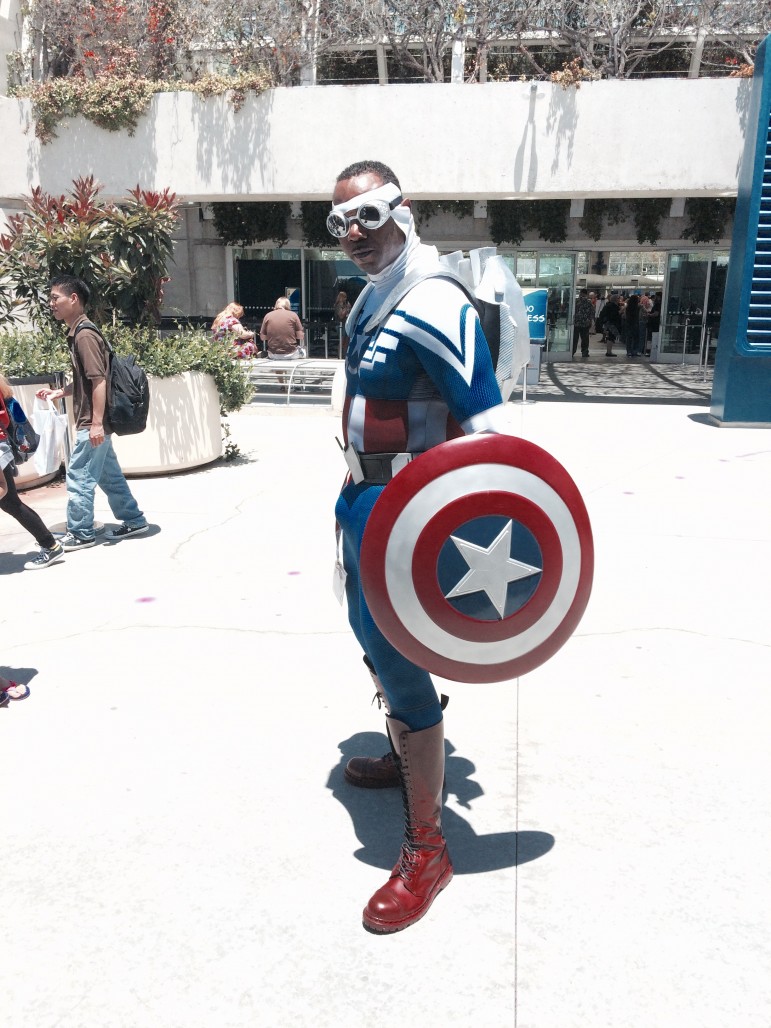
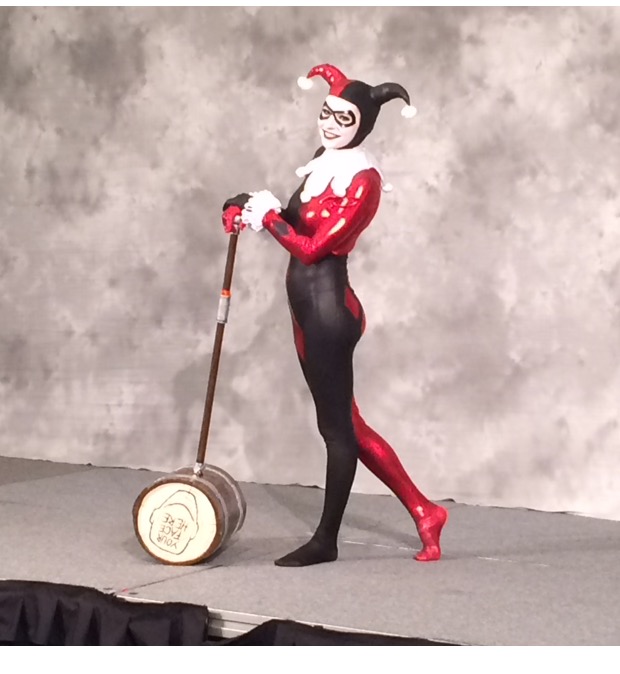
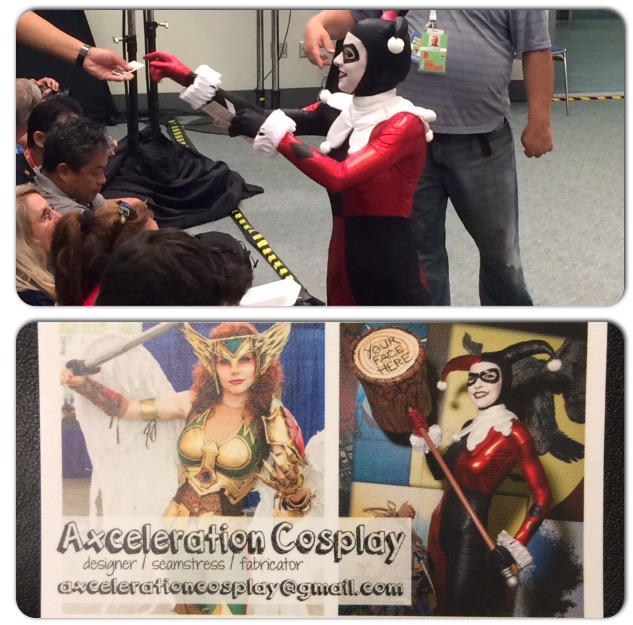

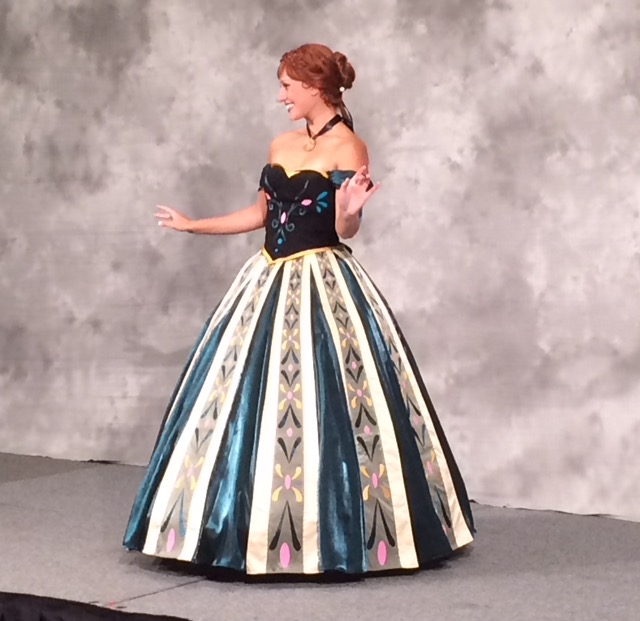
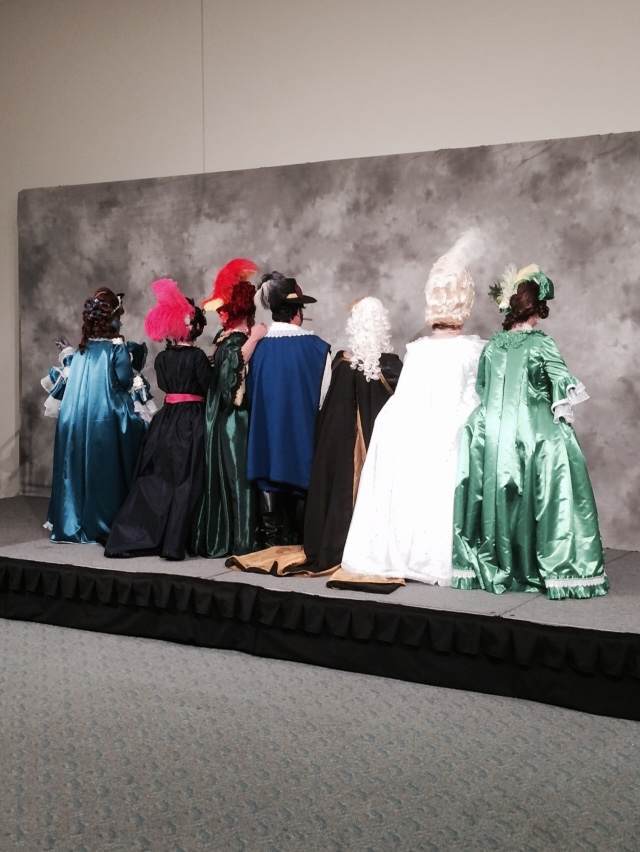
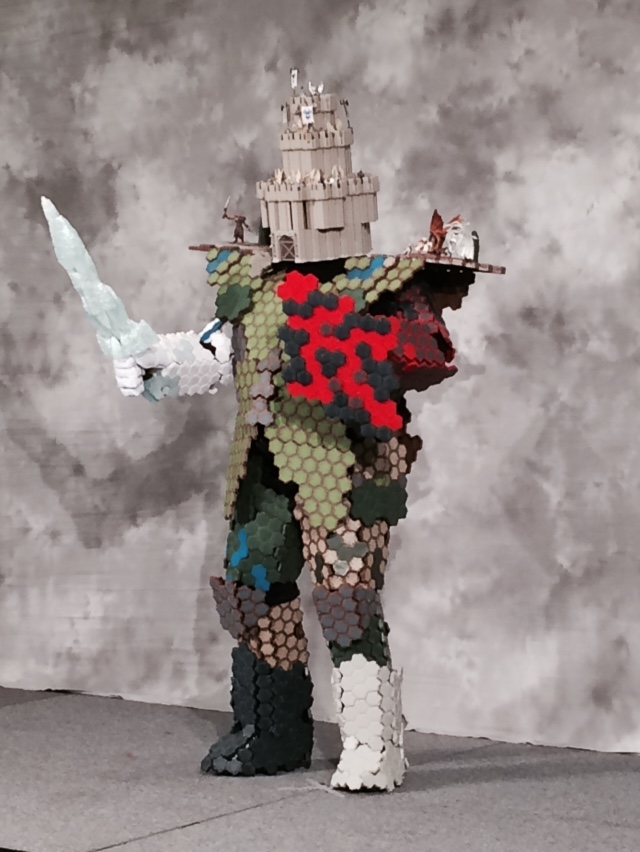
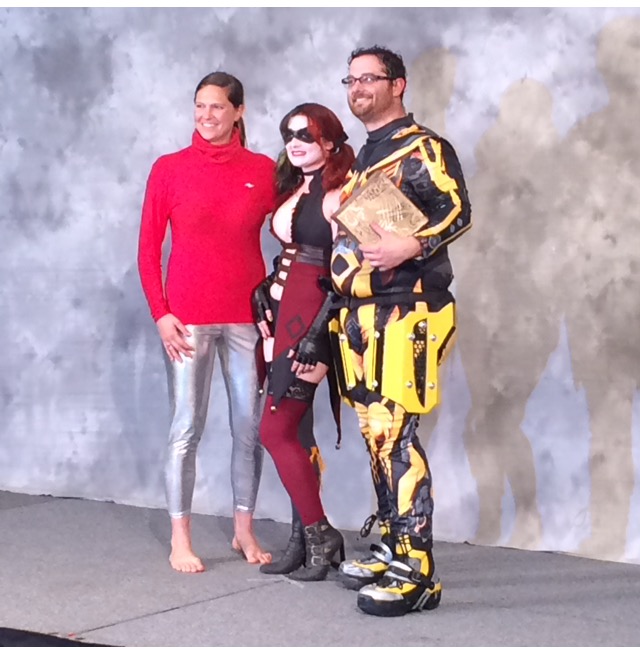
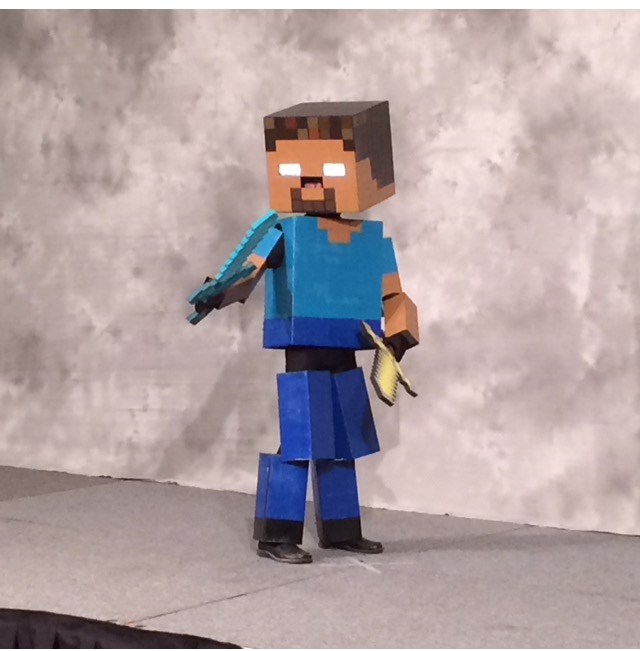
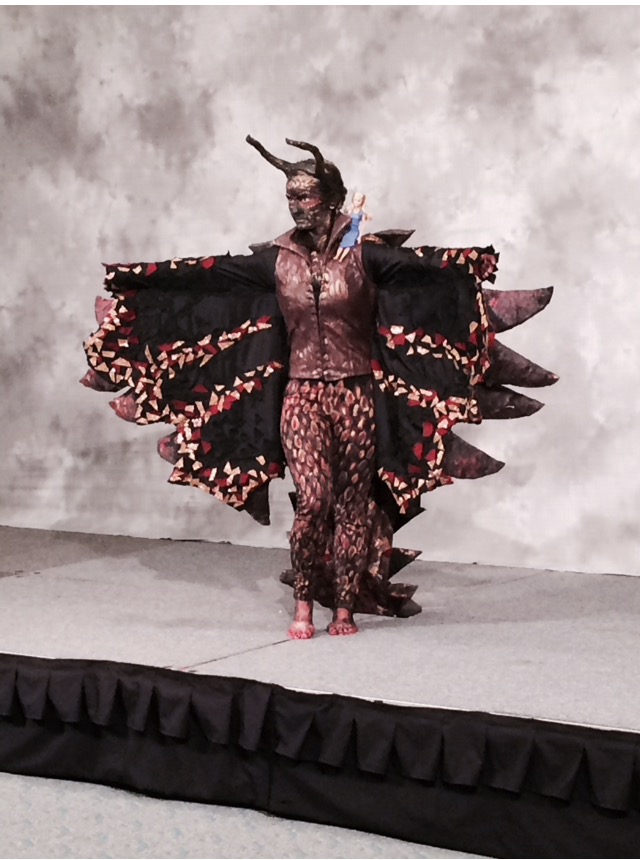
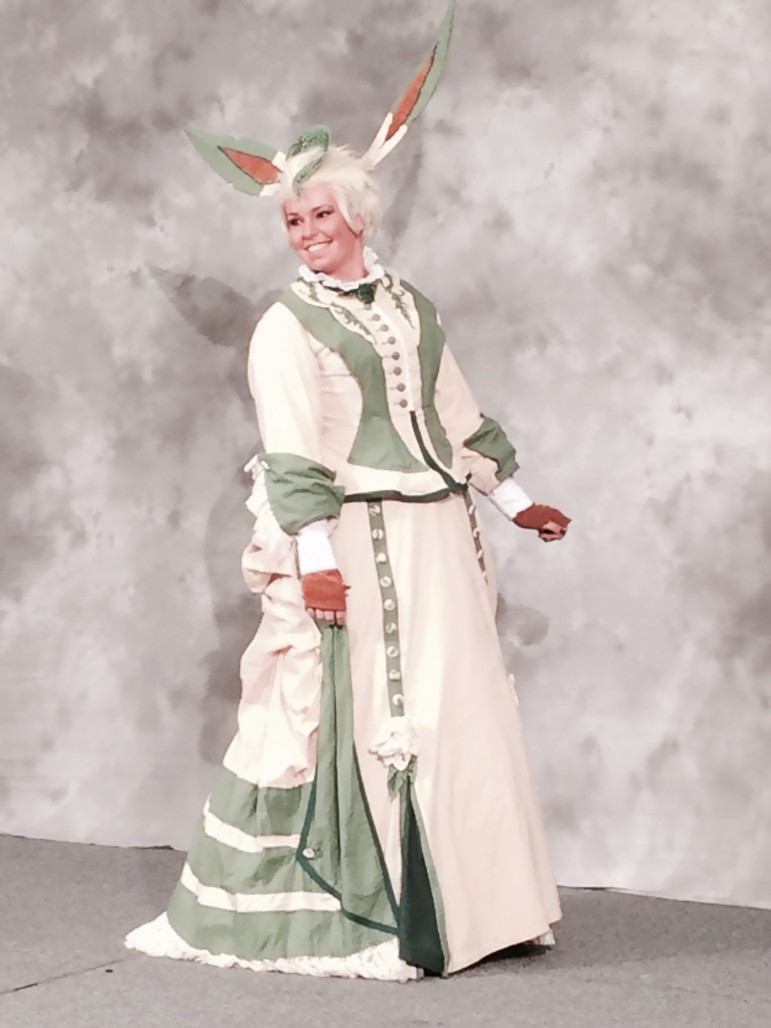
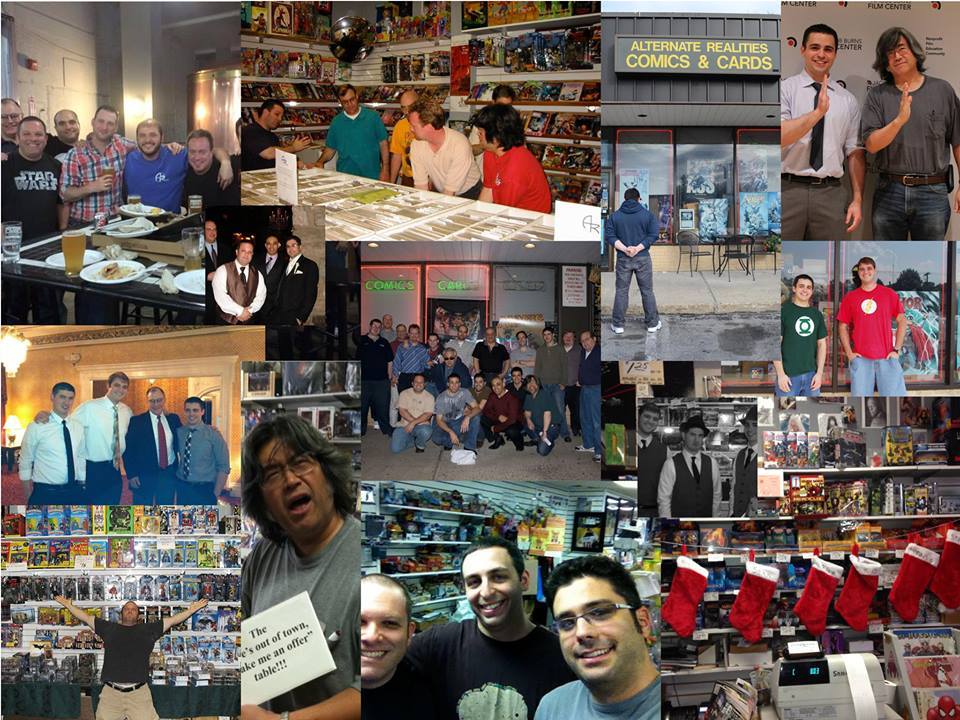


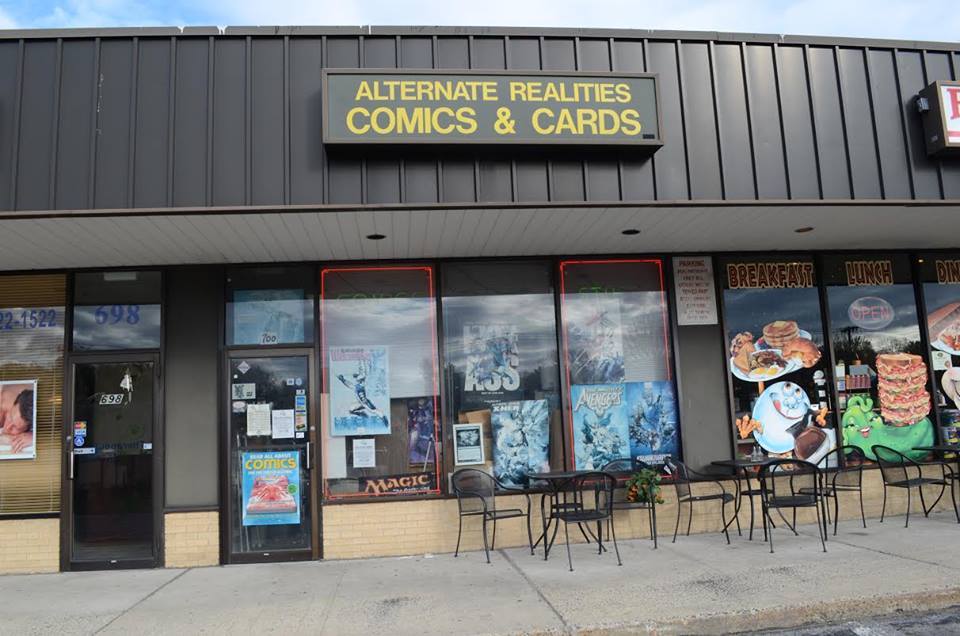




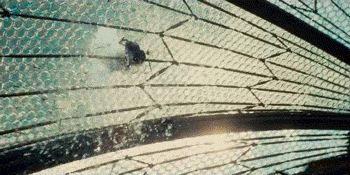


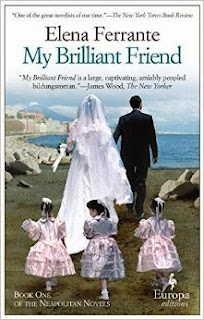
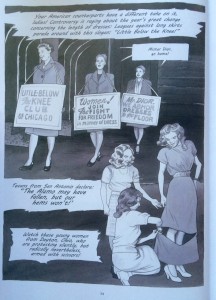
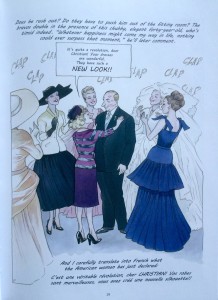
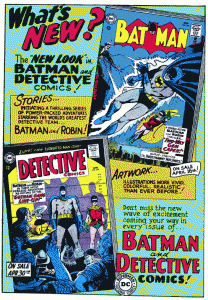

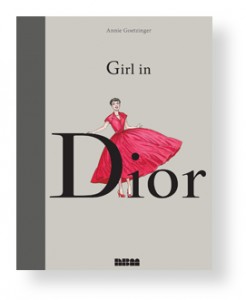
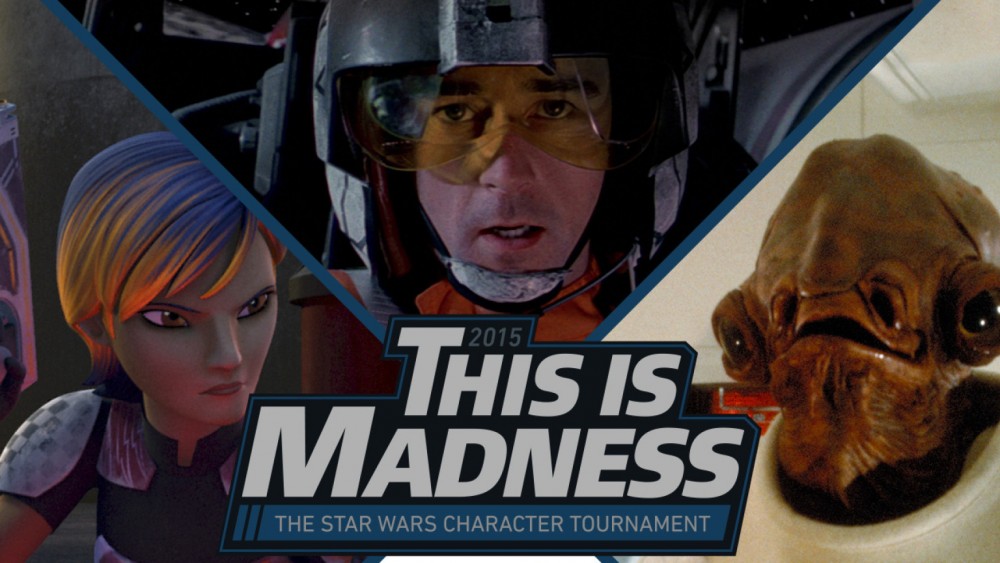

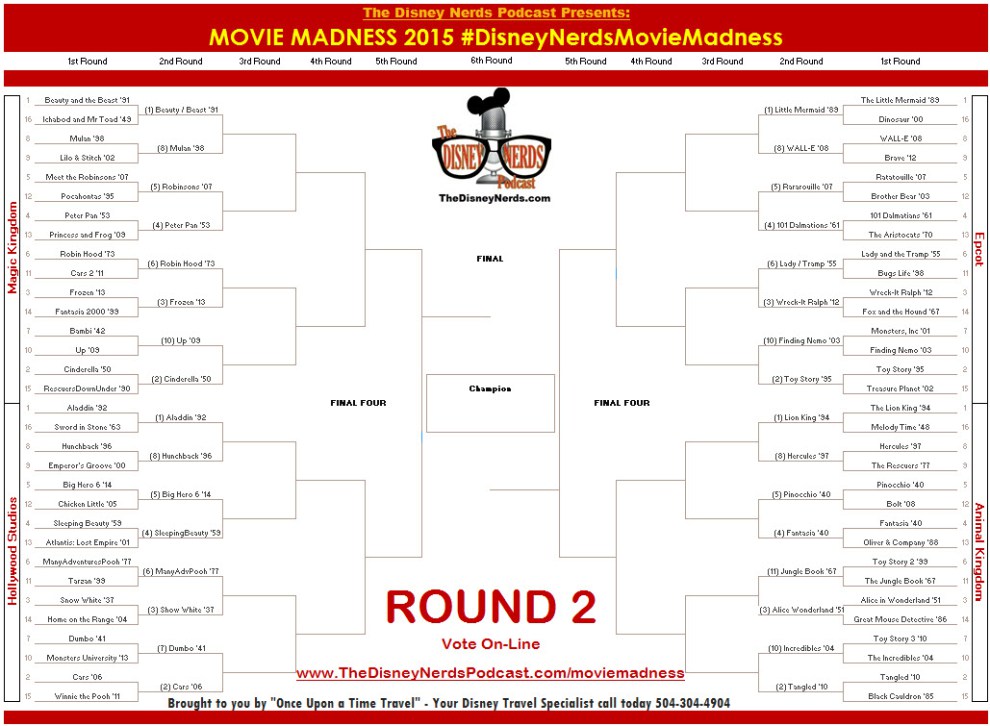



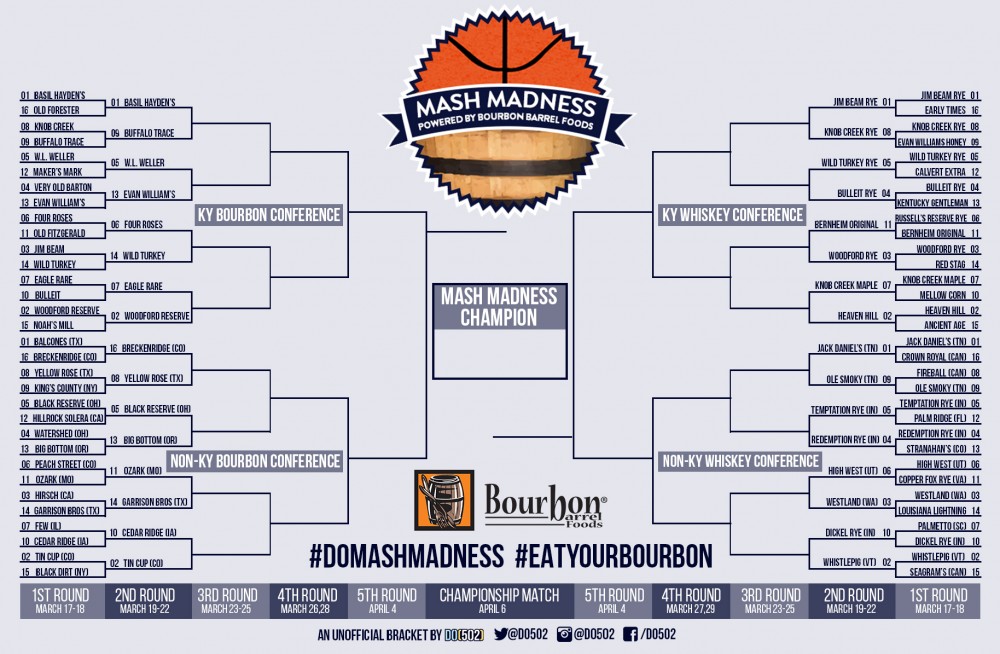
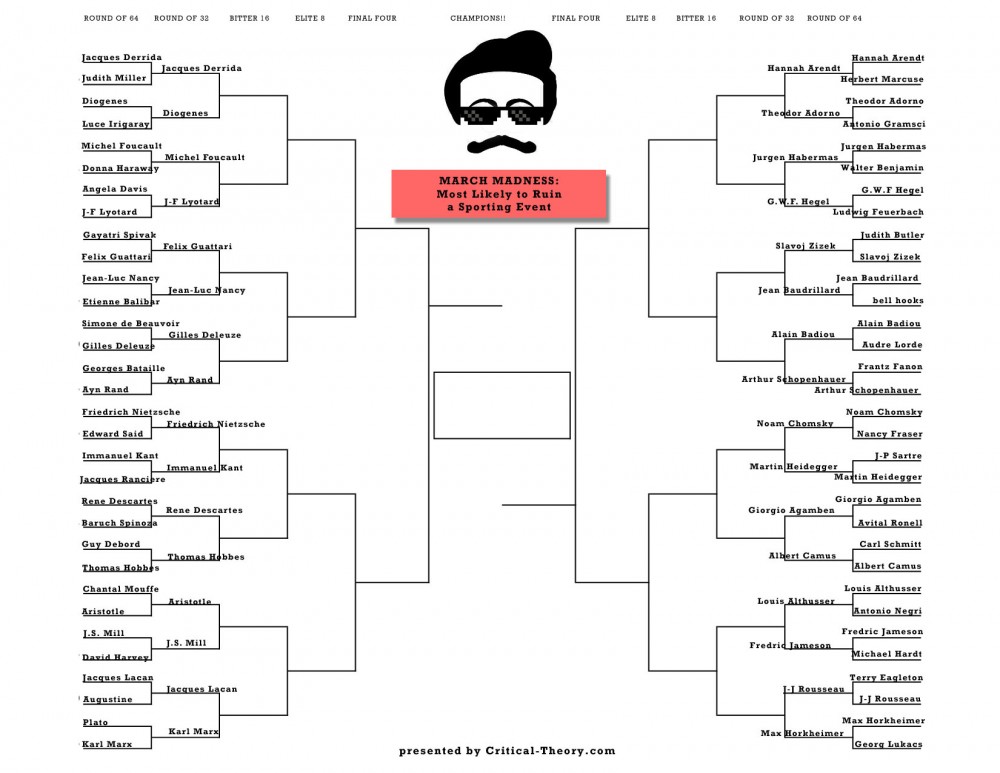
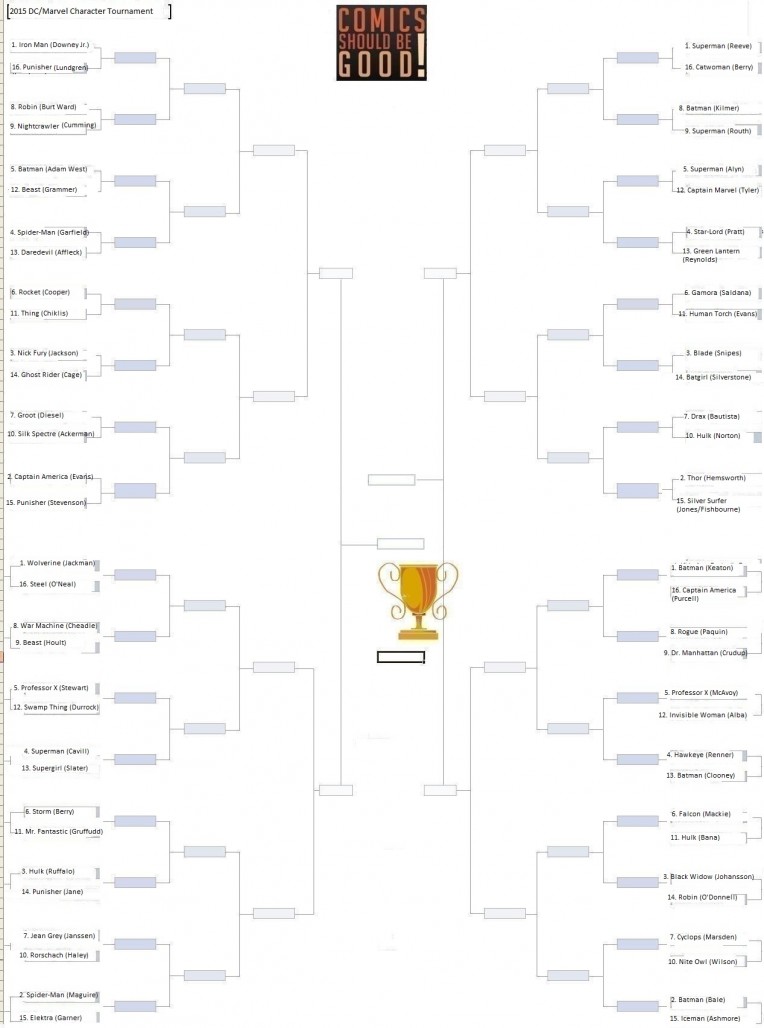
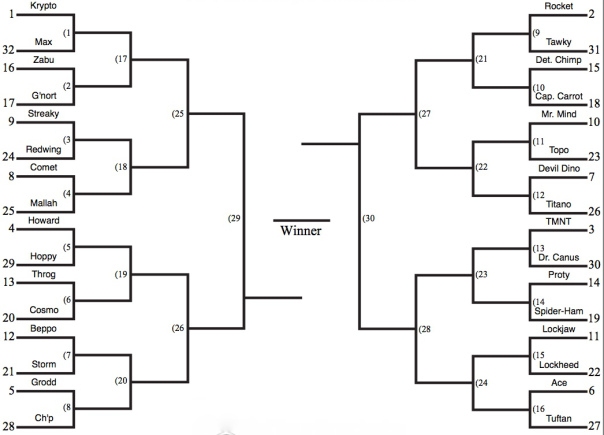
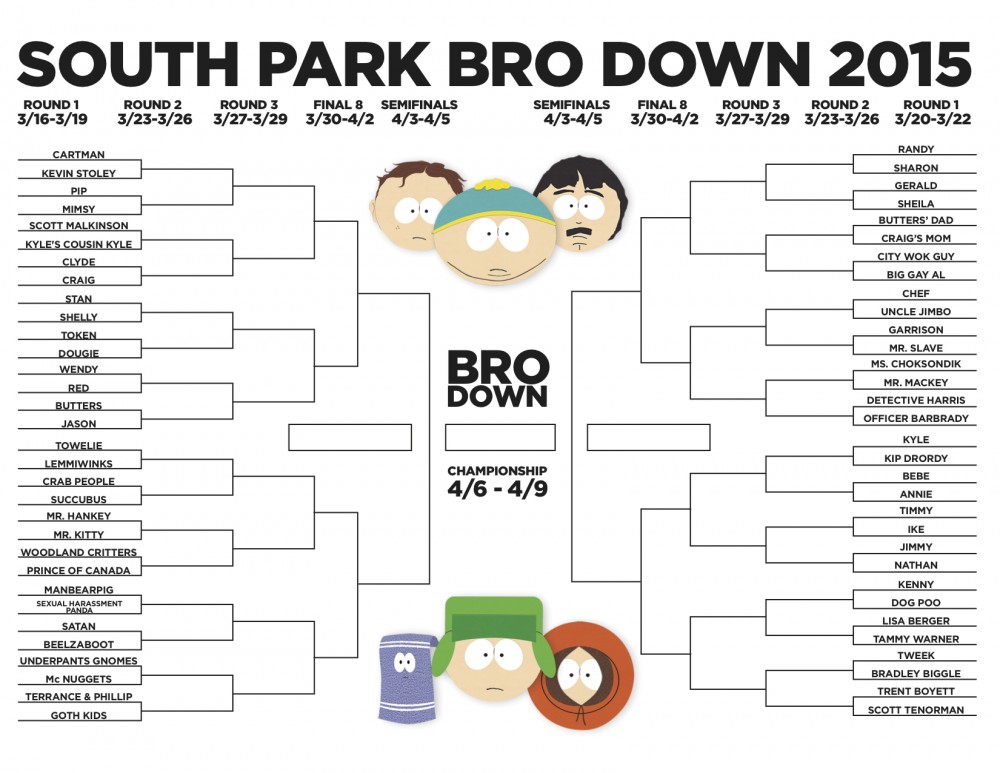
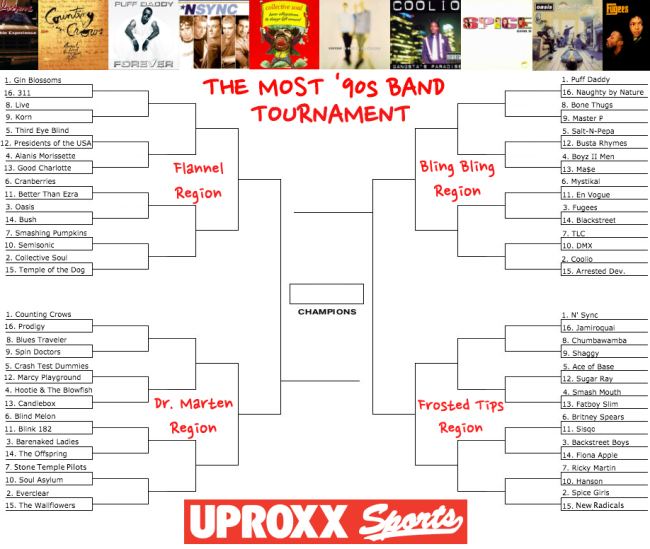
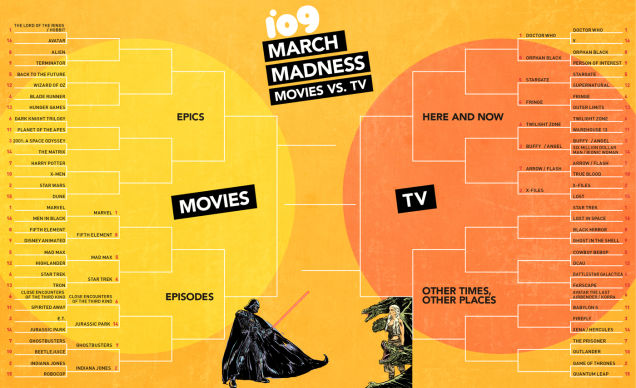
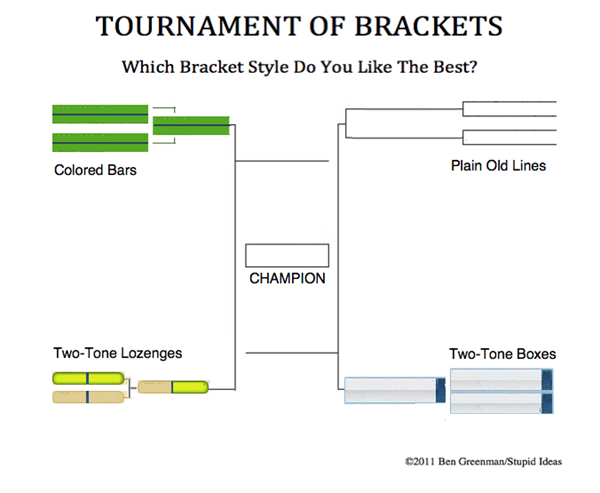
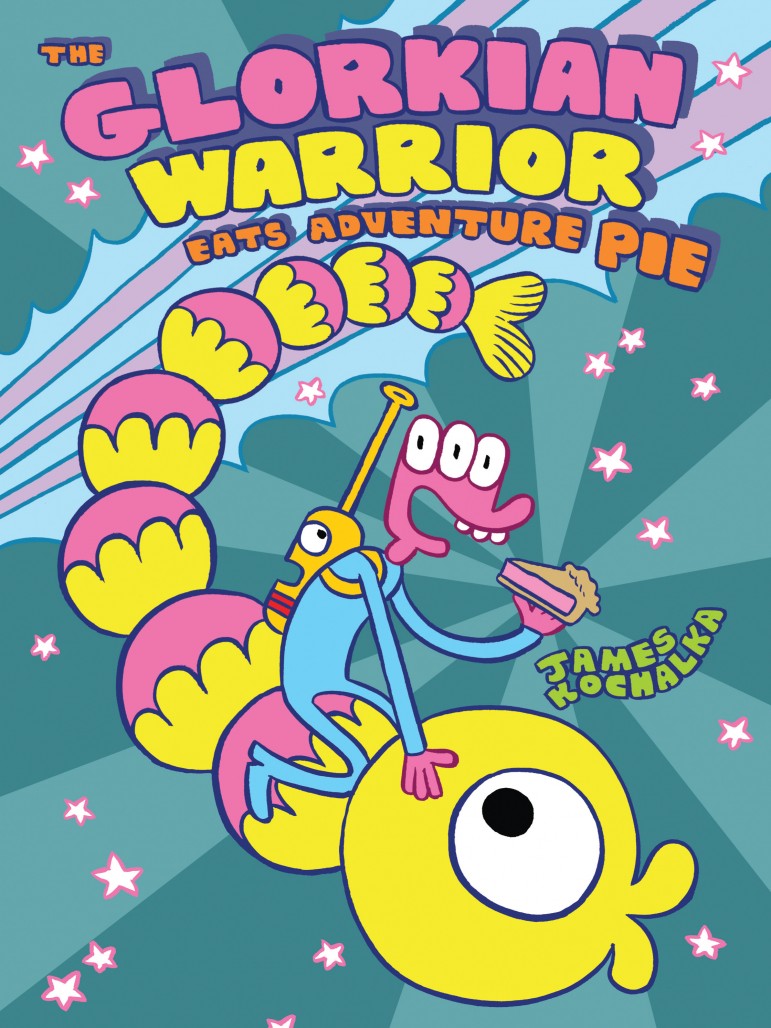
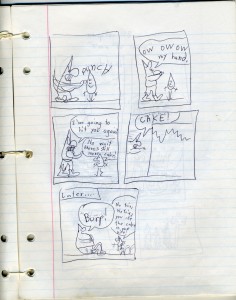

.jpg)
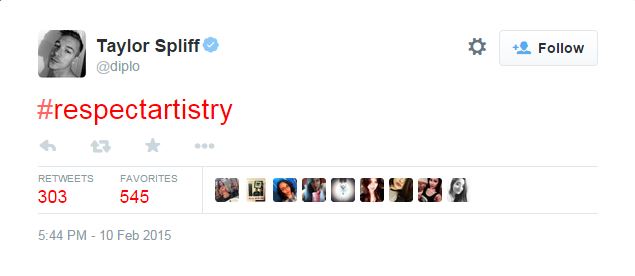

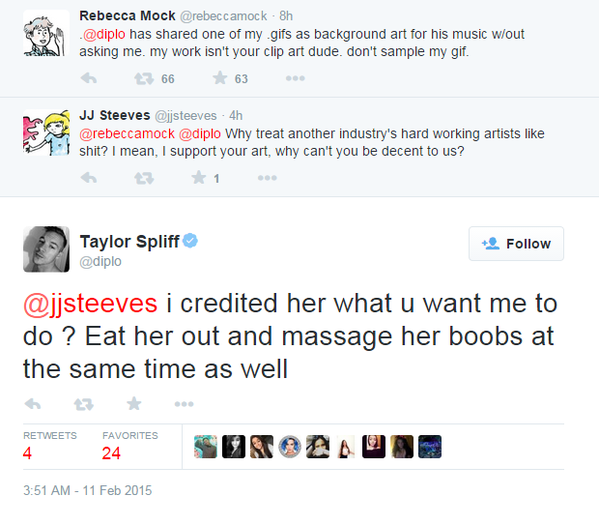
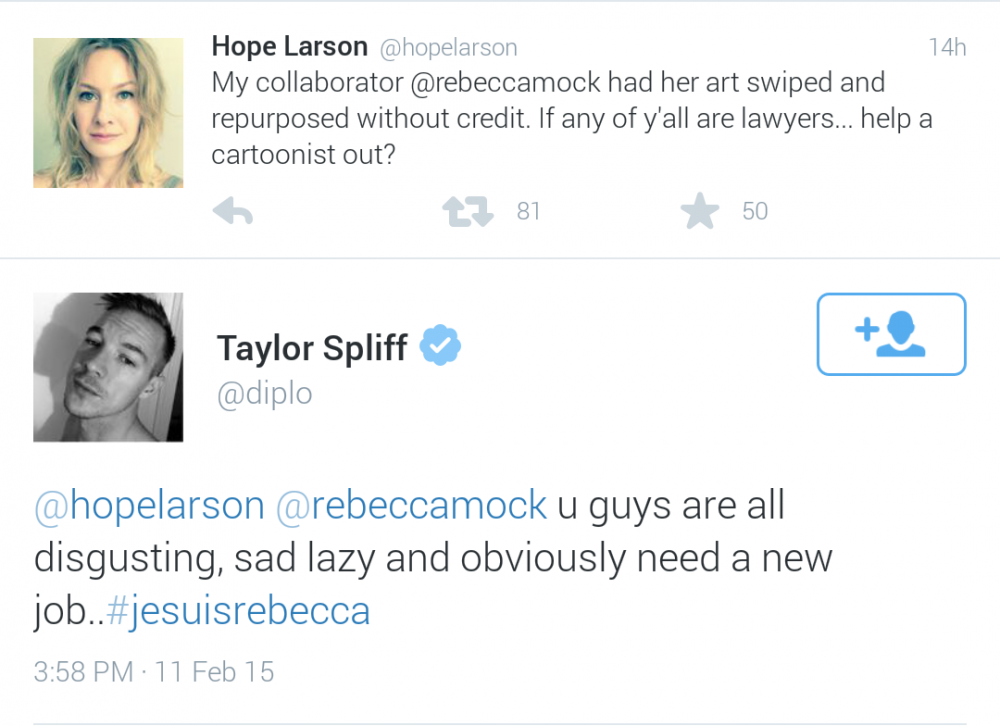
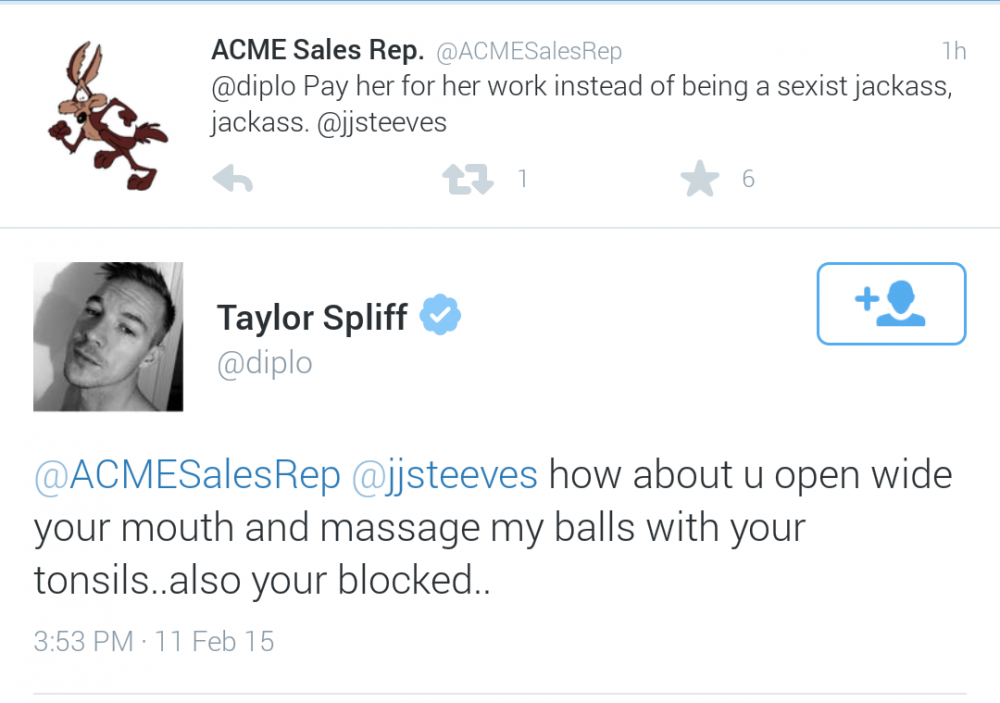
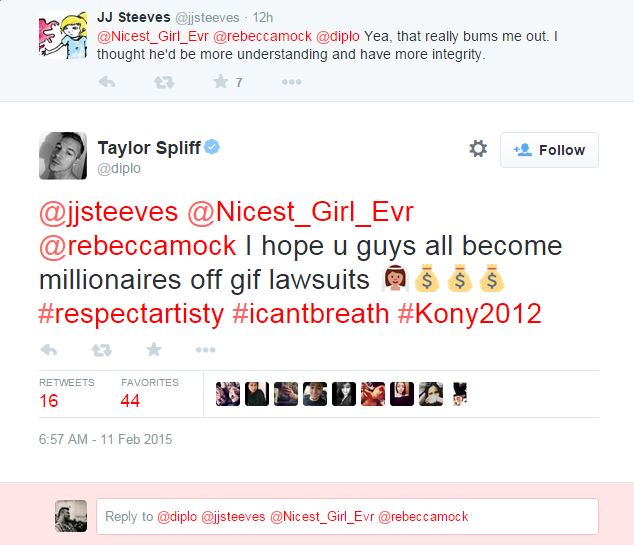
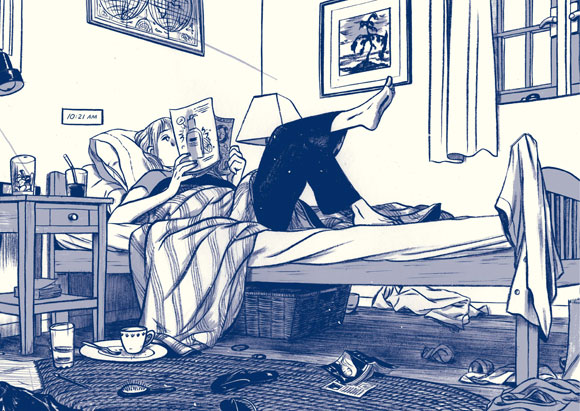

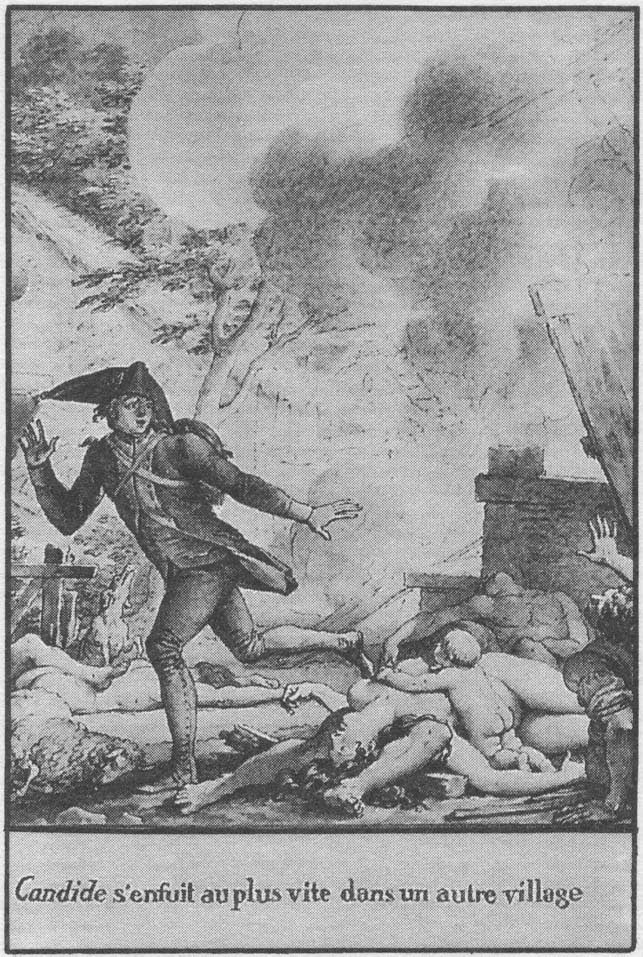

Come on, no one wants a “pet Galactus.”
A small version of Lockjaw, though…
I don’t know why new movies of the FF don’t make it the amateur space race, which is currently going on. They could win that, and because they’re amateurs Could be the reason why something goes wrong and they become the fantastic four
I saw “Fantastic4″ last night, and Sucktastic4ever was not worth it…
@Brian:
Why would a multinational corporation make a movie about anything like informing an ‘American’ populace about some modern day space race, while our daily lives have nothing to do with wanting to improve our way of life, or even be informed about something like a ‘space race’ that would require work ethic, education/training, and cooperation to accomplish?
Y’all think about it”:
Isn’t that a mark of today’s anti-culture, as we are consumers that pretend to be ‘Americans’ / ‘humans’, saying “…You’ll probably never see it. Thant’s reality though”? Here we are as everything is made to break down and take our money, instead of work and last, while we sit in traffic, and have our dignity chipped away so we can push ‘corporate policy’ for a paycheck that has diminishing returns on purchasing power, and the concept of making even a great movie for something like LEE/KIRBY’S Fantastic Four is more about “consumer” disappointment and wasting our money, than it is about entertainment that inspires the imagination, incites intelligent conversation, and urges the viewer to want to go out and learn more about science, being around a group of people who are different and working together to have fun and adventure, and of course -the Fantastic Four.
This goes for everyone from the people who walk around high school tracks and football fields for some charity cause to gain money and recognition for curing cancer (while companies like Monsanto have patents on genetic sequences, but will not use them as it is more profitable to treat than cure diseases, along with the congressmen they have in their pockets), to the lame corporate tools like us as we just sit in traffic, and have the nerve just to tell ourselves success is based on attitude, and ‘think positive’ (while we have no urge or idea as to how to enable cooperation and tolerance at work or in our neighborhoods, have no idea how to tell someone how to meet their city council members, how to have a peaceful non-violent protest against things like how we use gerrymandering or out-sourcing jobs instead of training Americans, or how to be involved in town hall meetings), to the ‘consumer’ that is willing to pay over $2.00 for a “comic book” that is mainly about “super heroes” band names (instead of cutting edge, and just plain quality sequential art / story telling) -Remember this when you make a decision fellow ‘Americans’, and overall Fantastic4 ticket buyers / ‘consumers’ / chumps :
Live like a consumer, then get treated like a ‘consumer’.
Yuuu-p, thaz riiii-ite, I said it and I’z says it agains, cuz it’s time to DRAXX THEM SKOUNST, as we treat these mammajamaz from Fox like sum kinda “terries” onz’tha wallet n $h!+ -I mean is get’n waaay too froggy, and we’z gotta be prepared to blast up on these wallet-terries know’msaynz… (youtube Key & Peele – Prepared for Terries):
Live like a consumer, then get treated like a ‘consumer’.